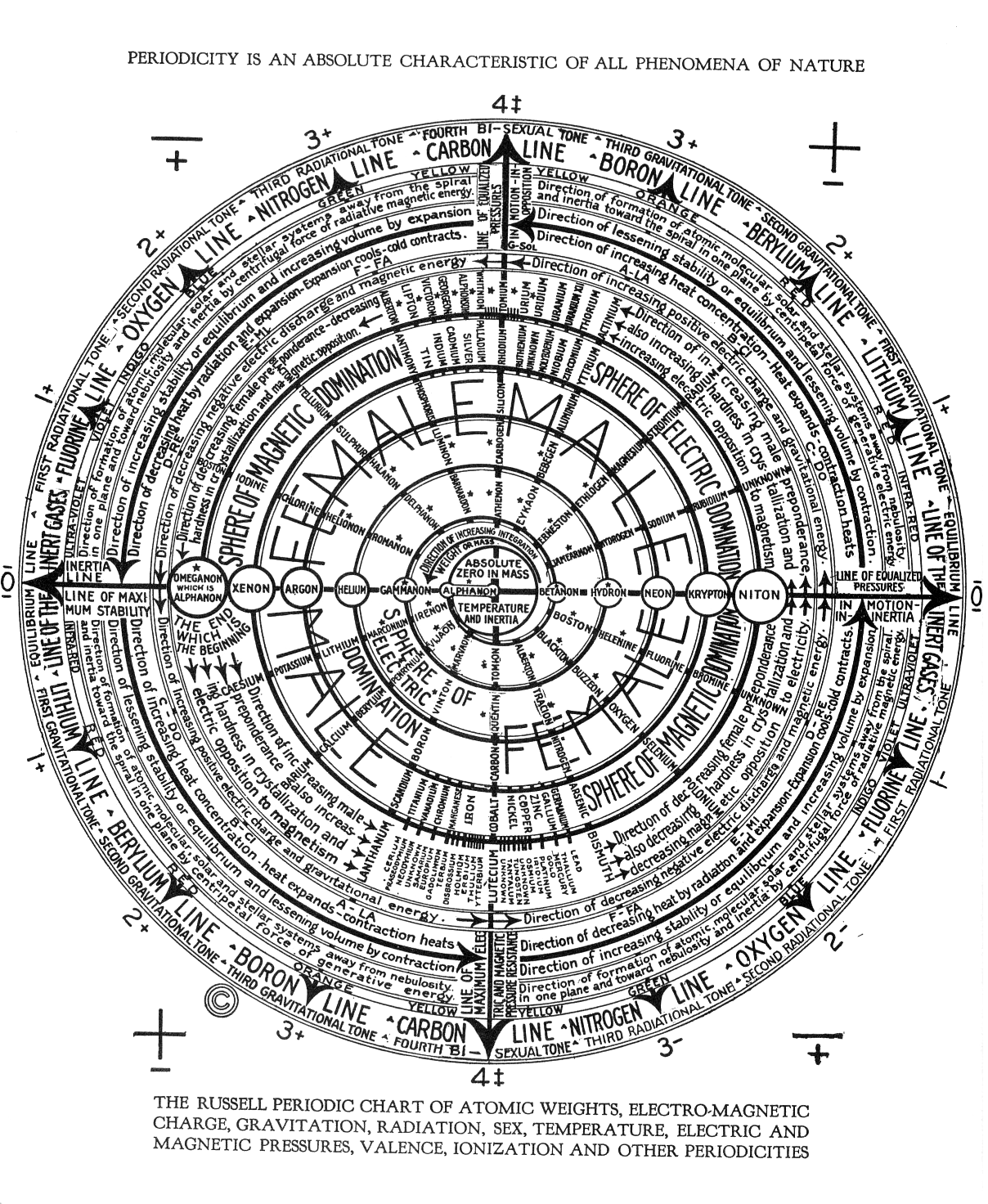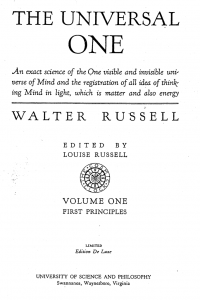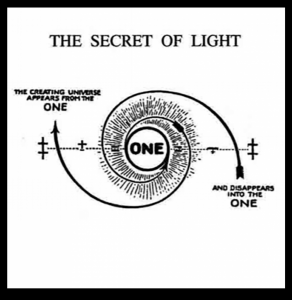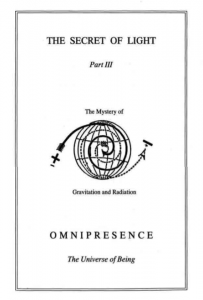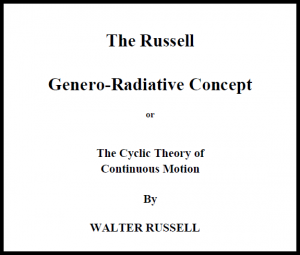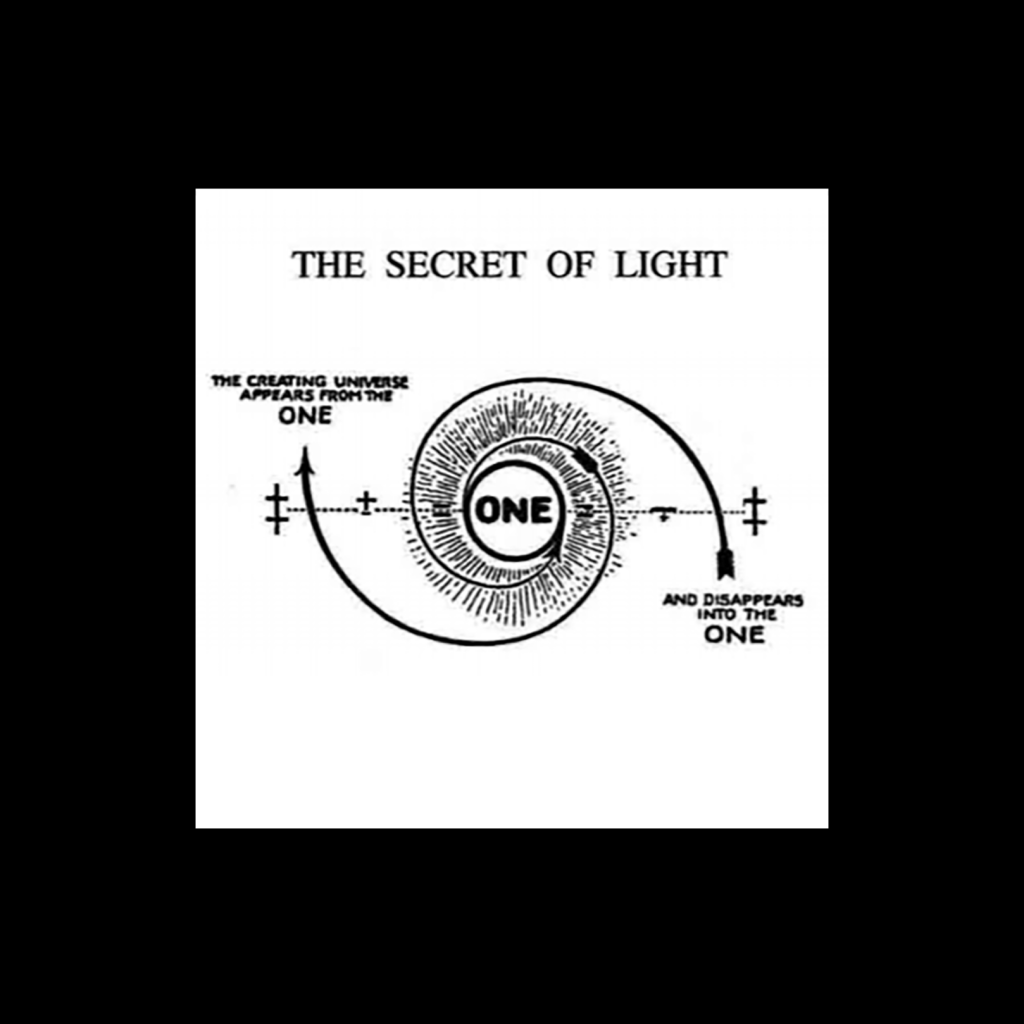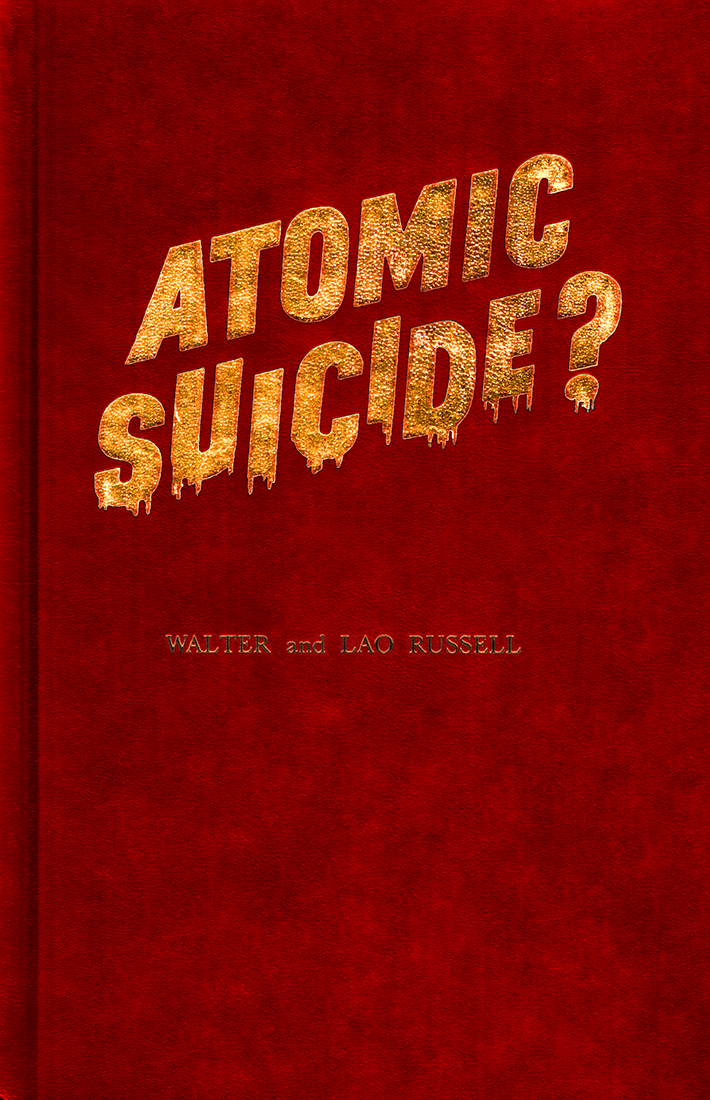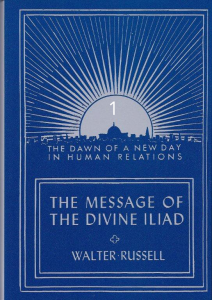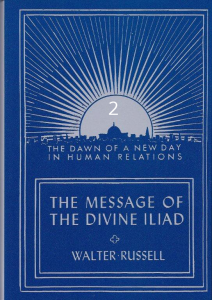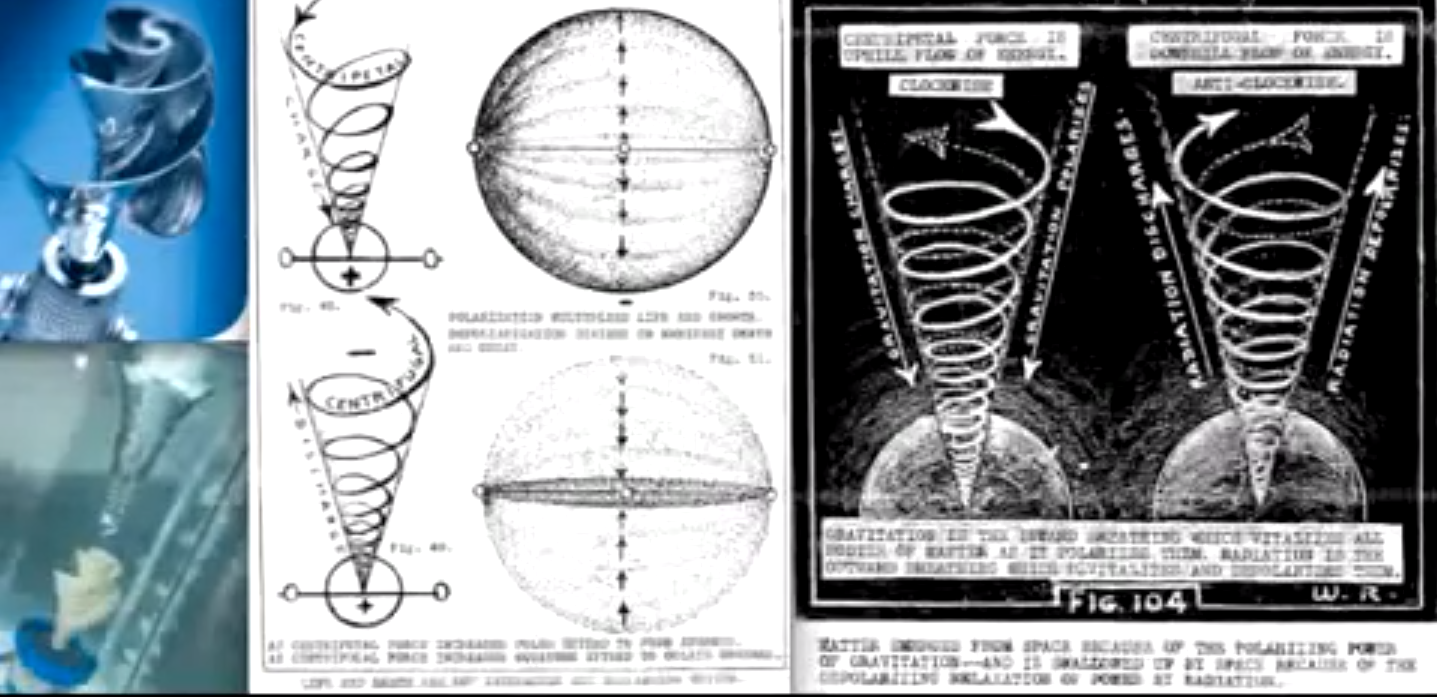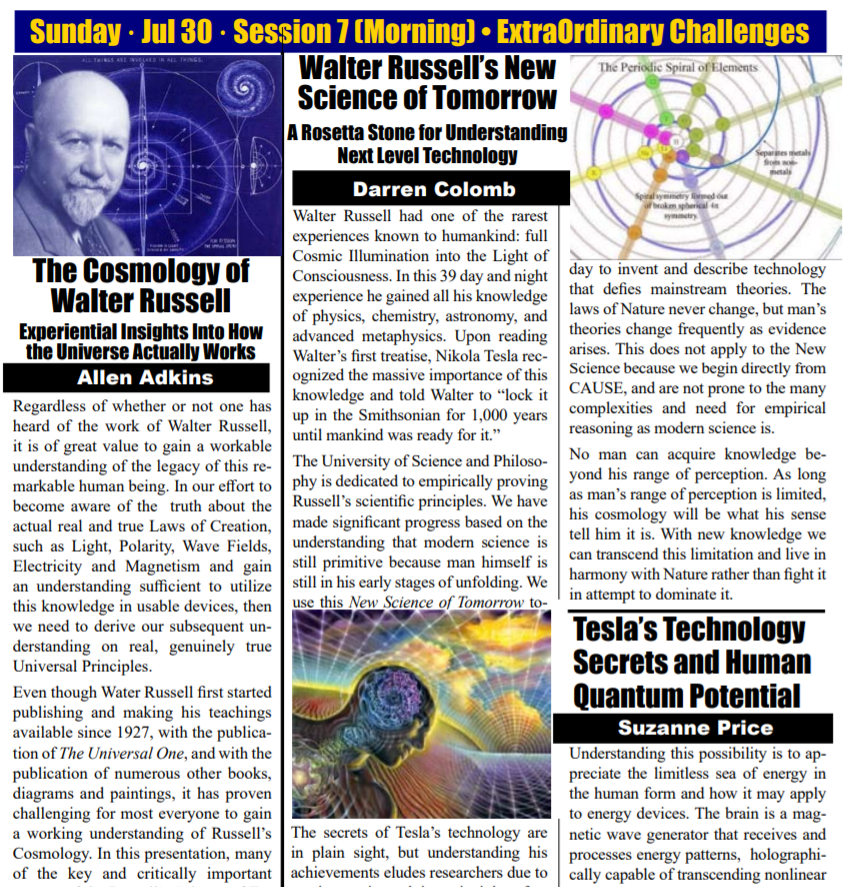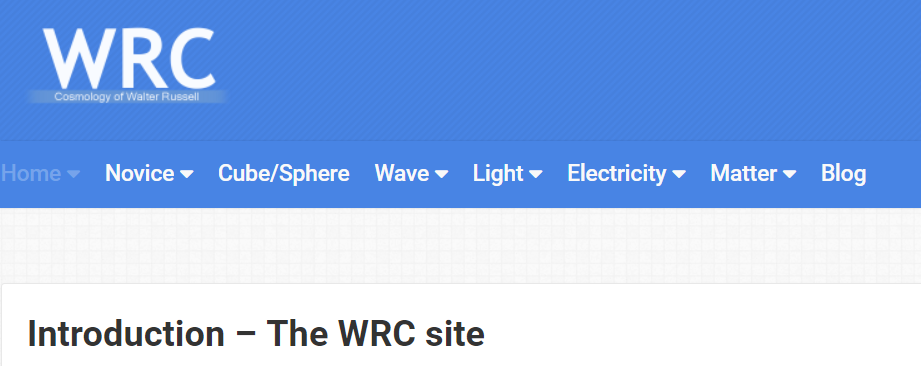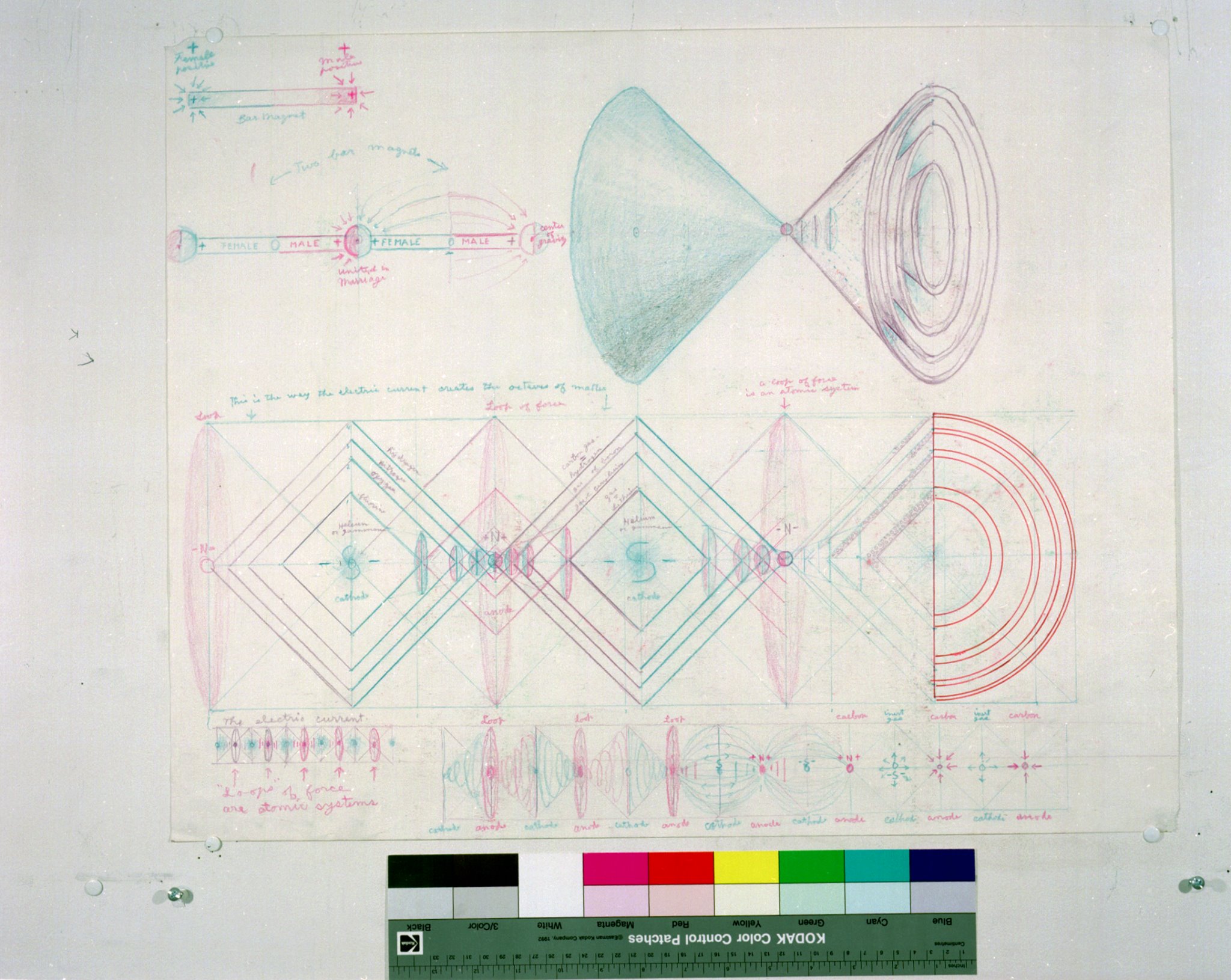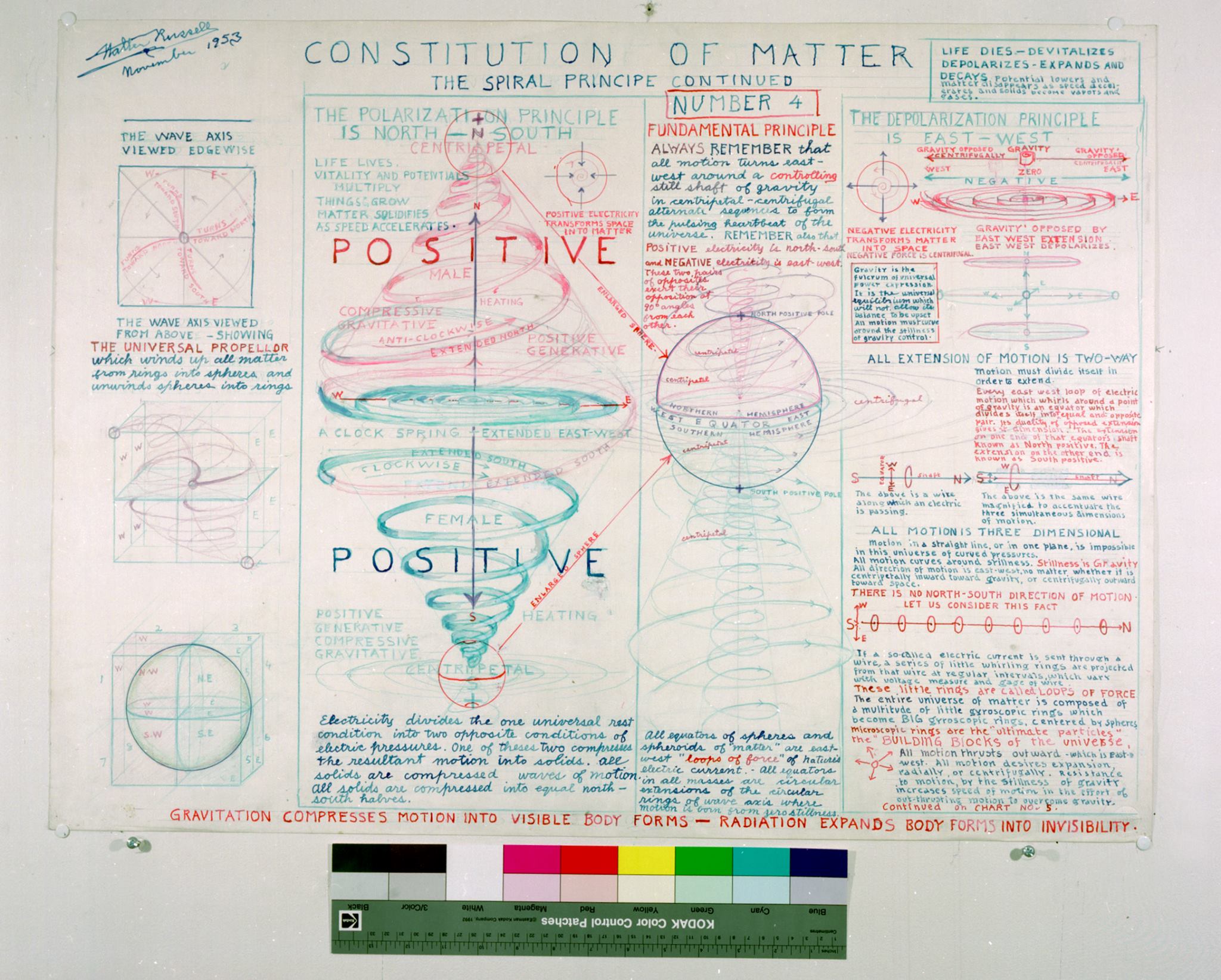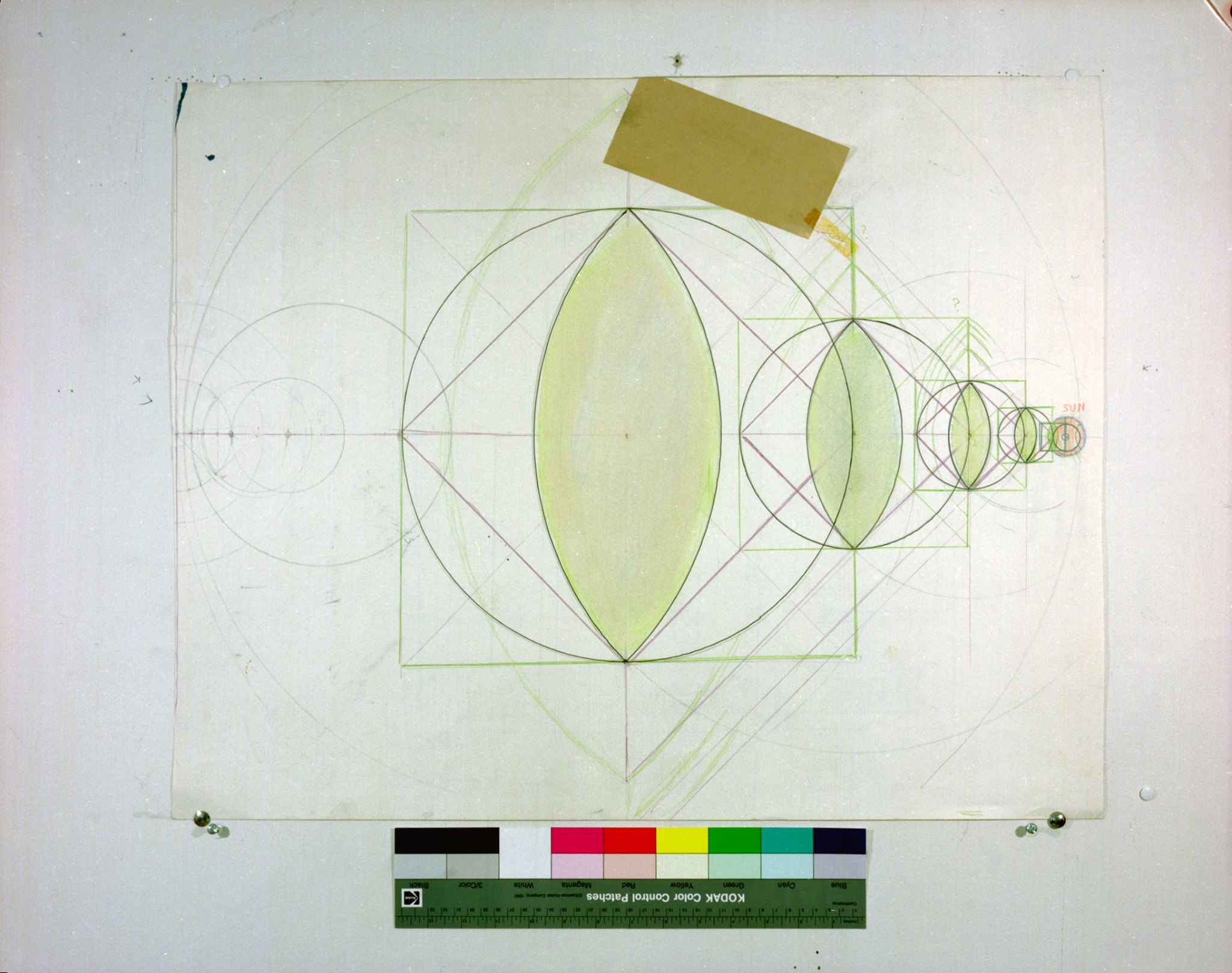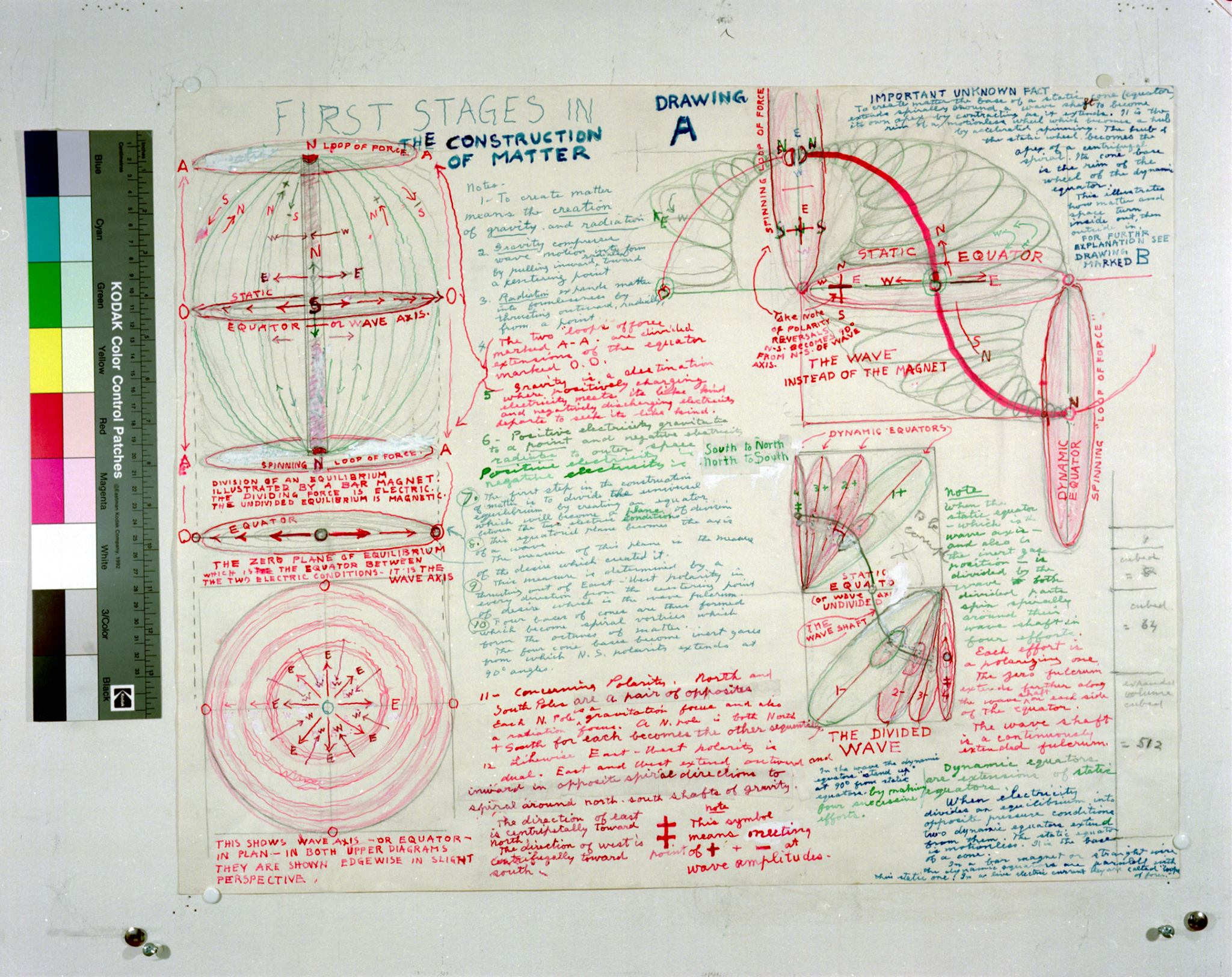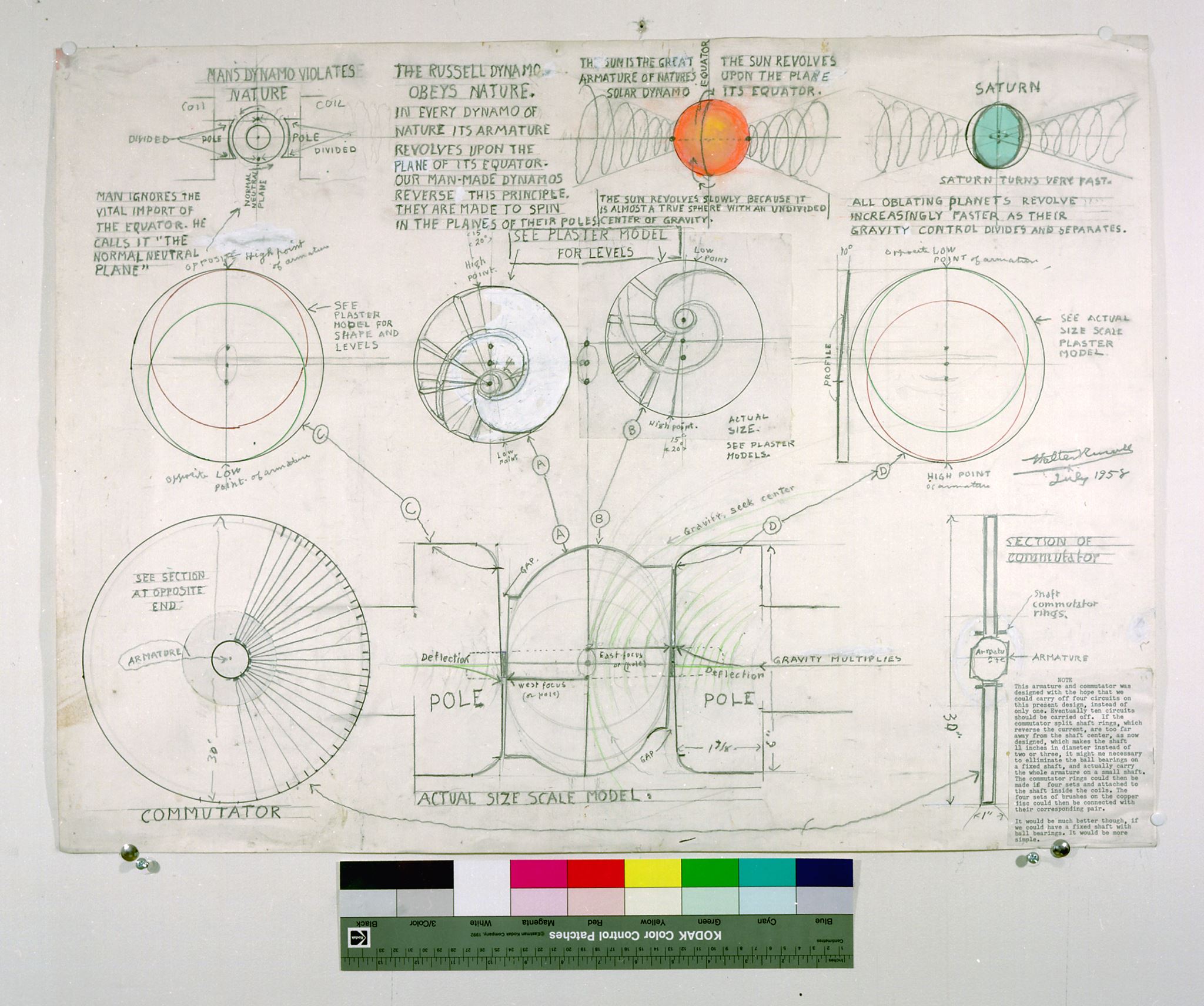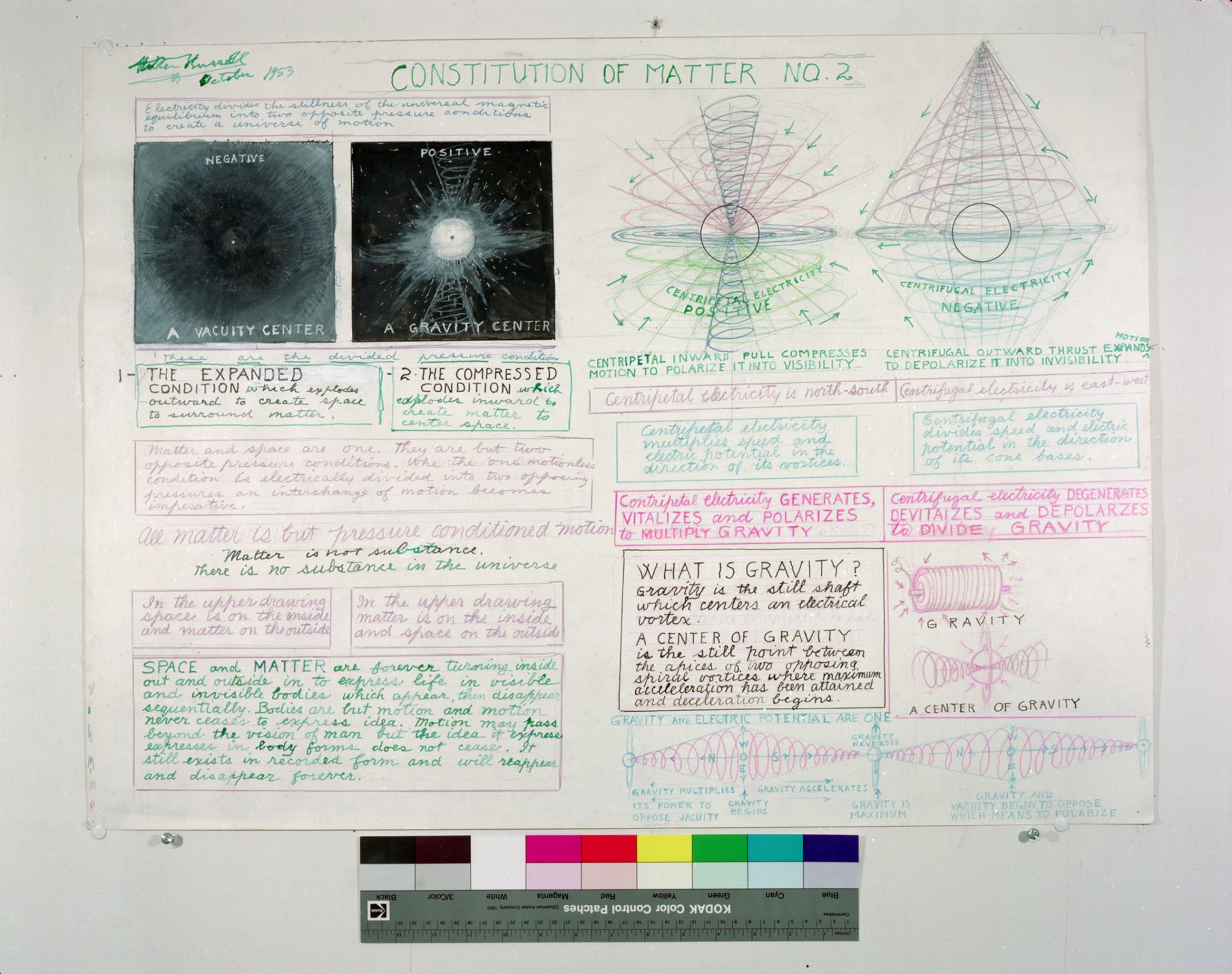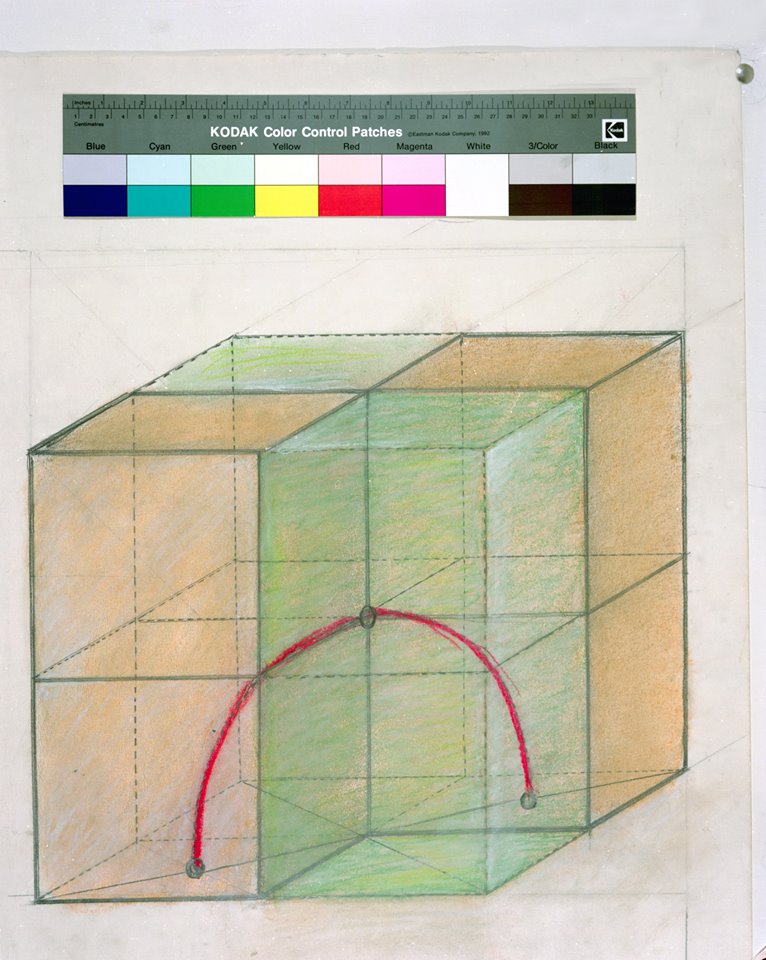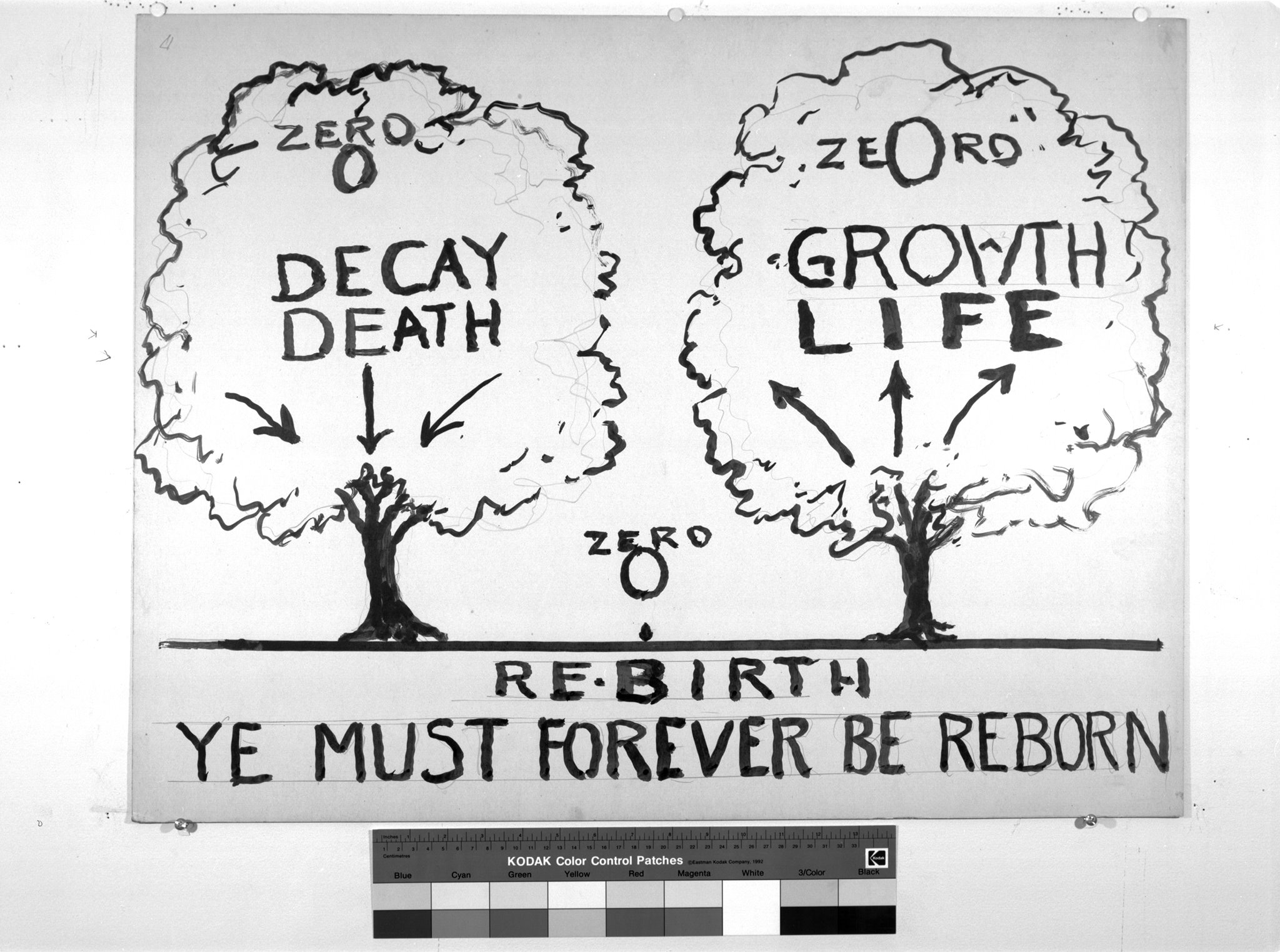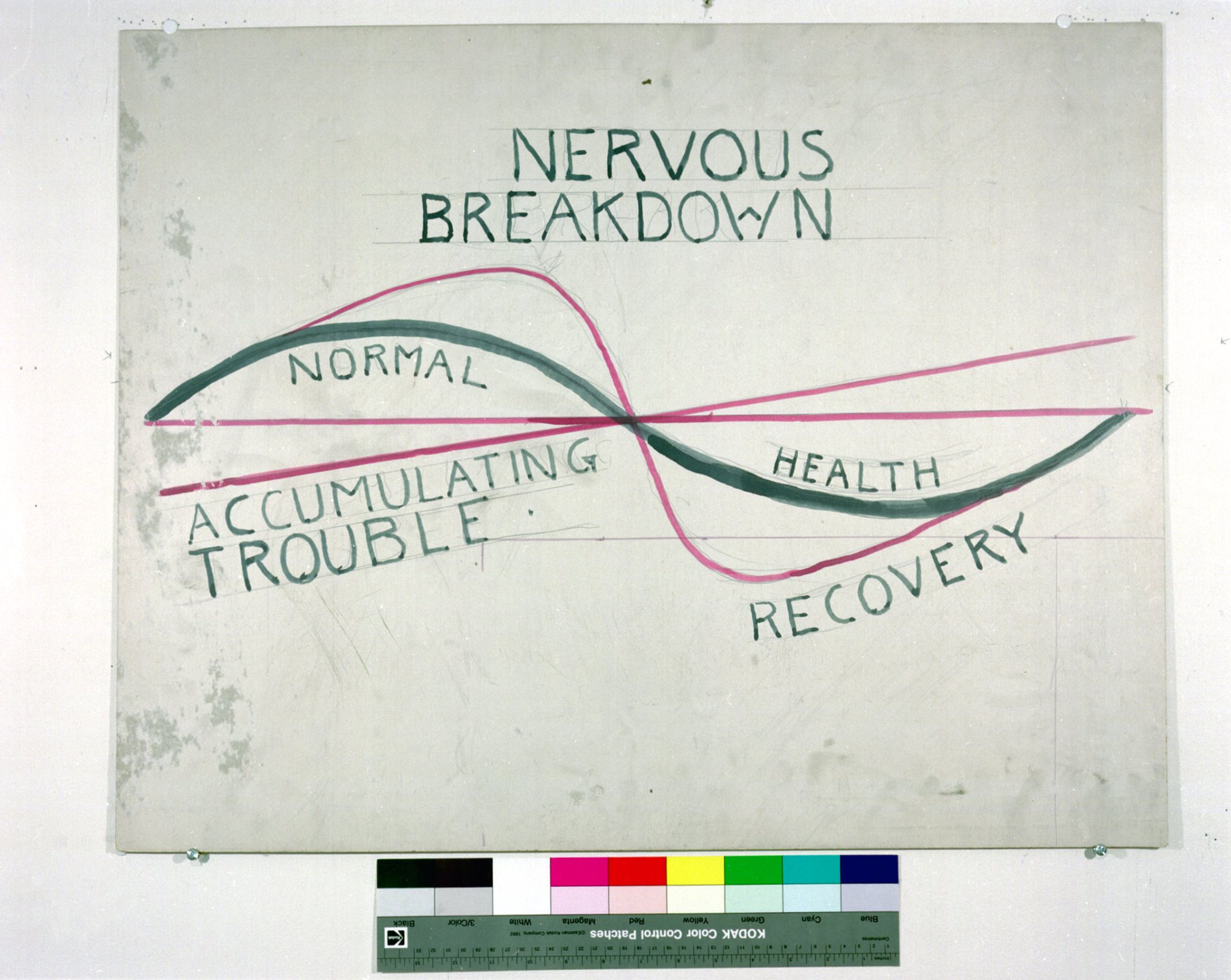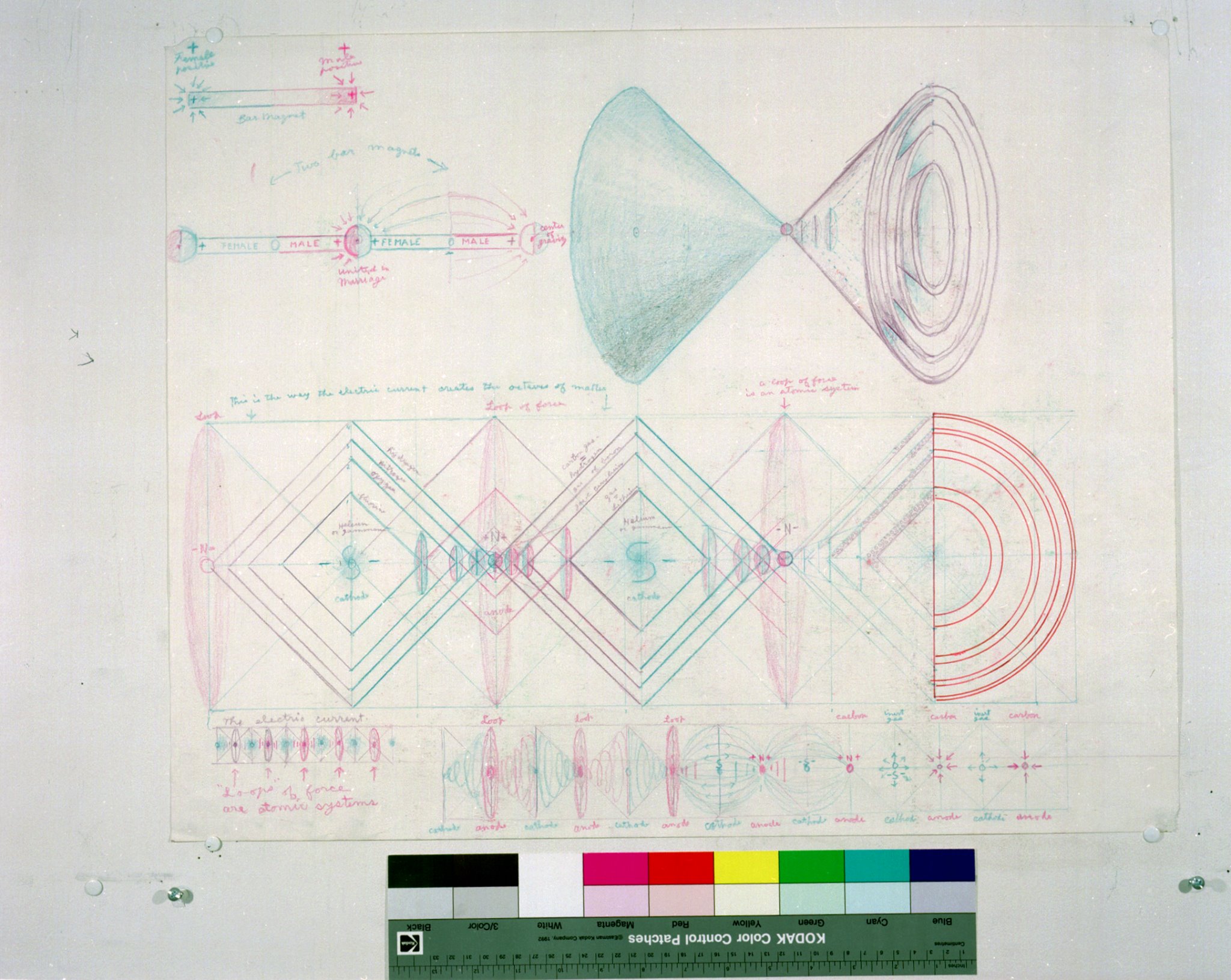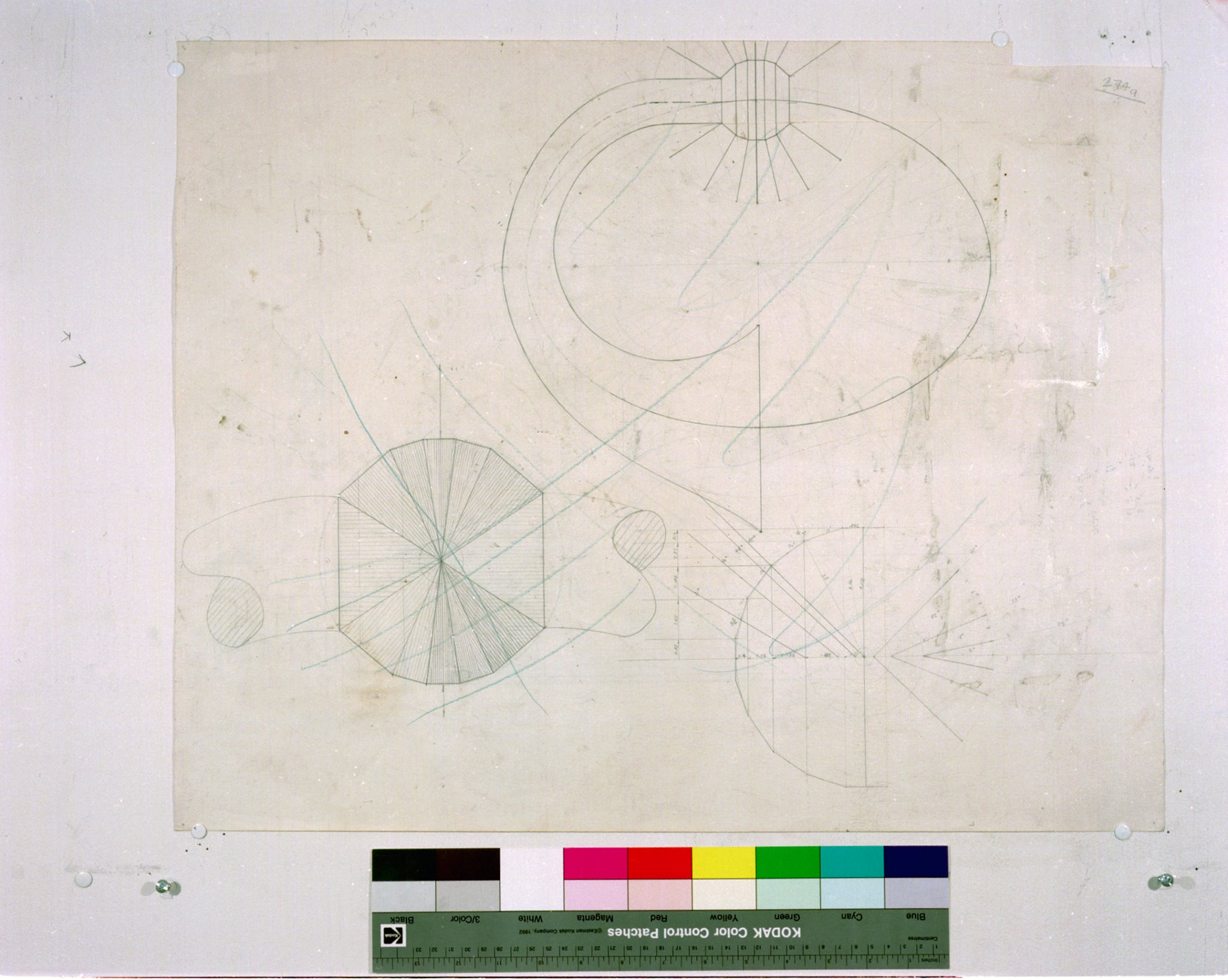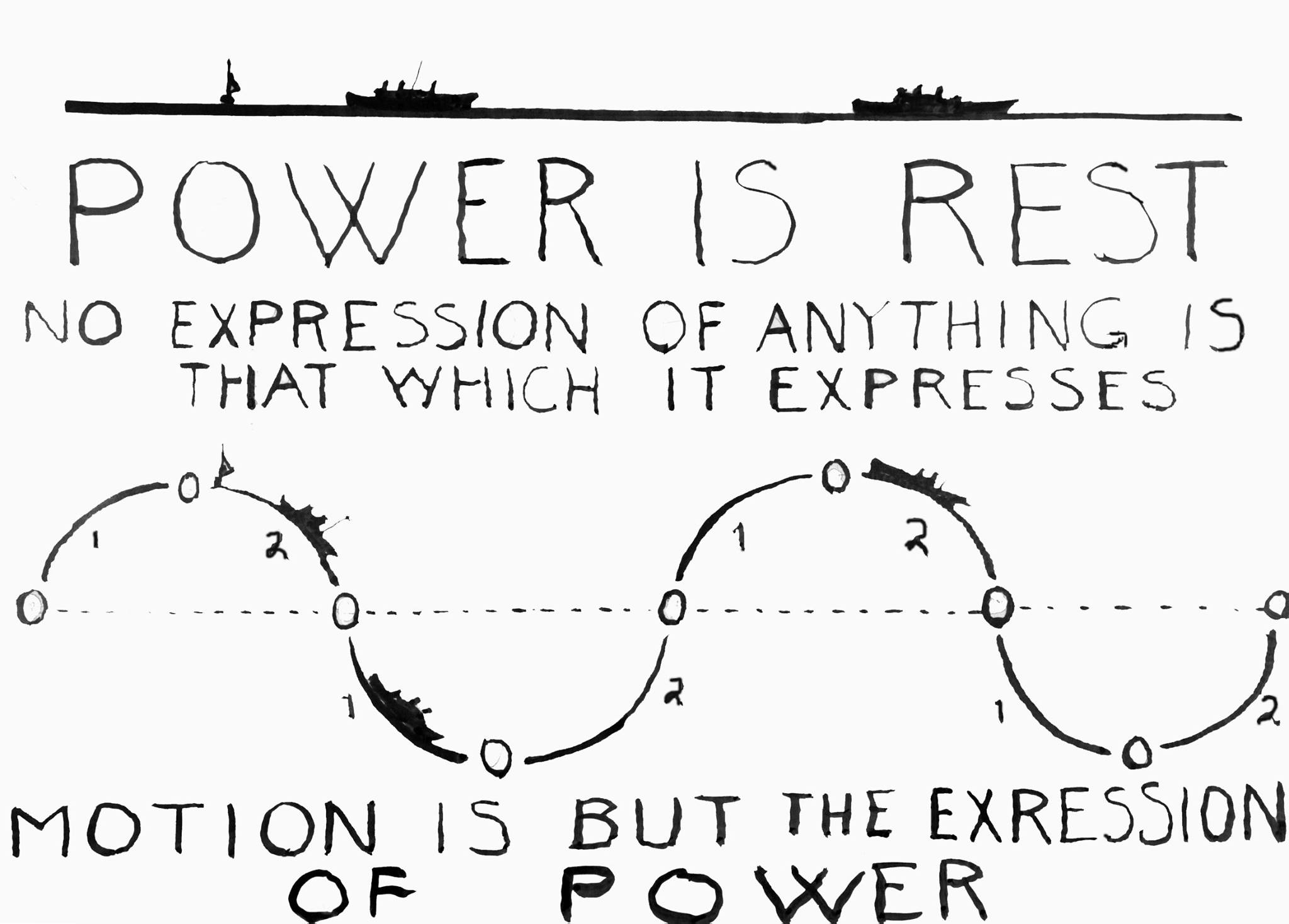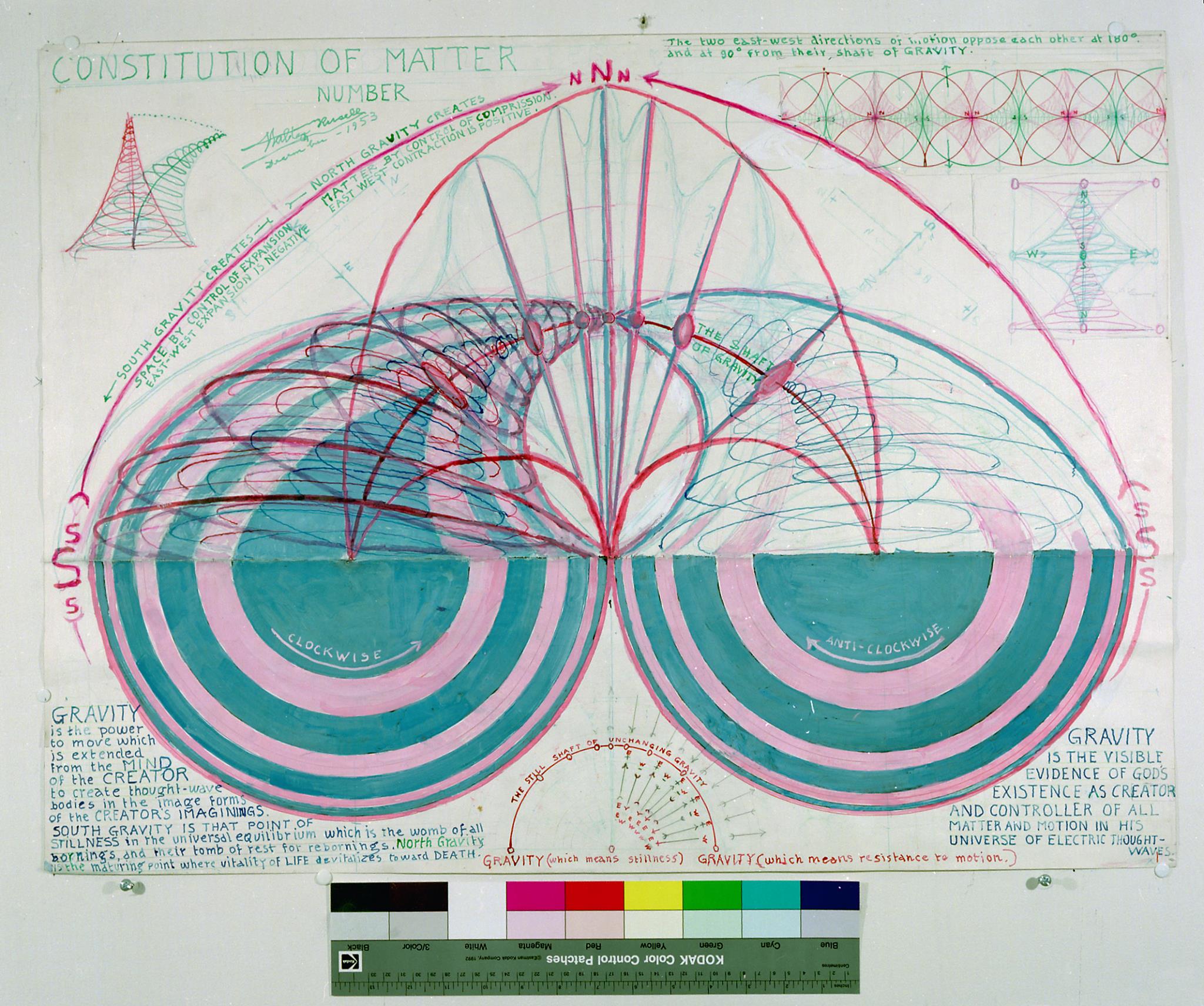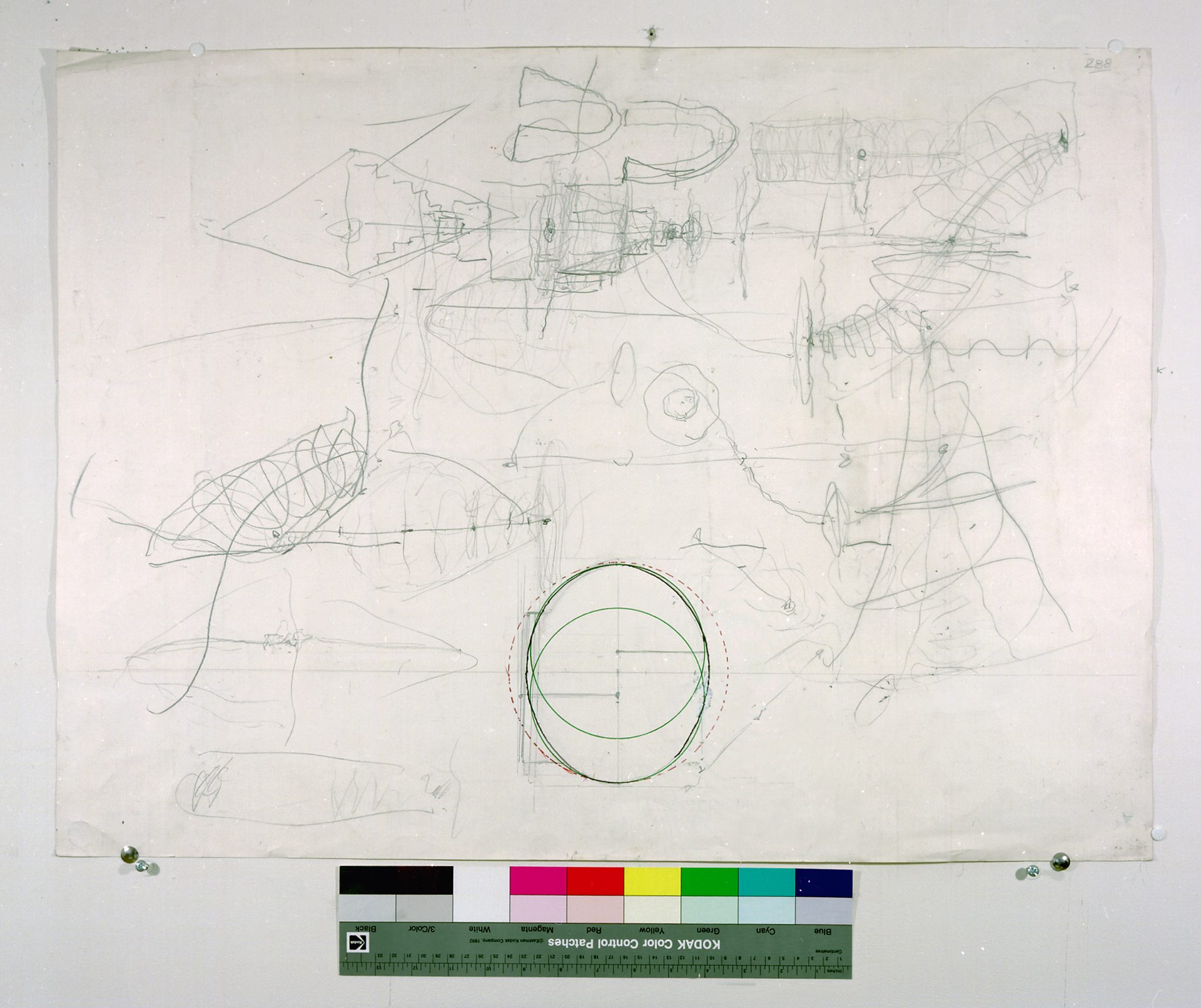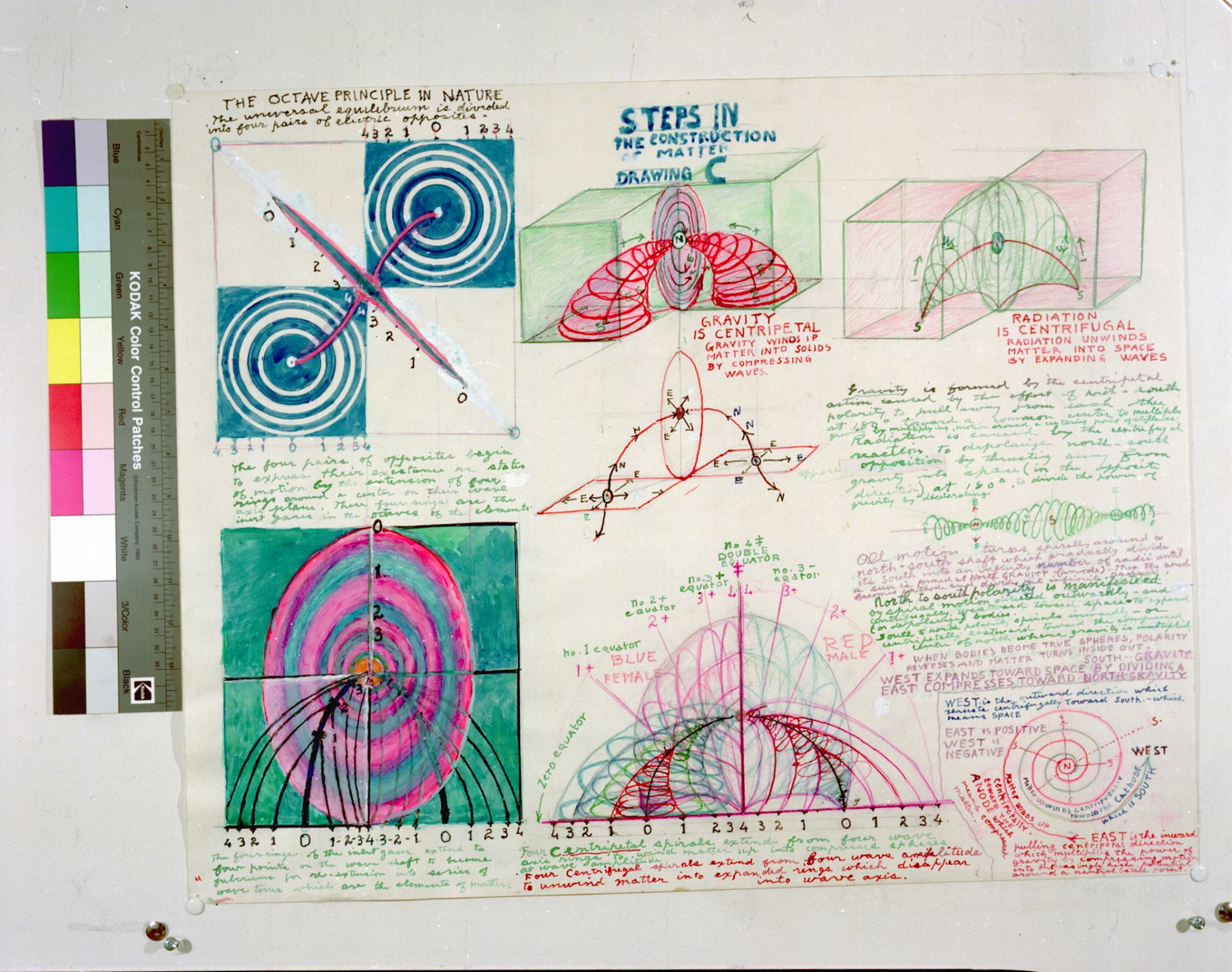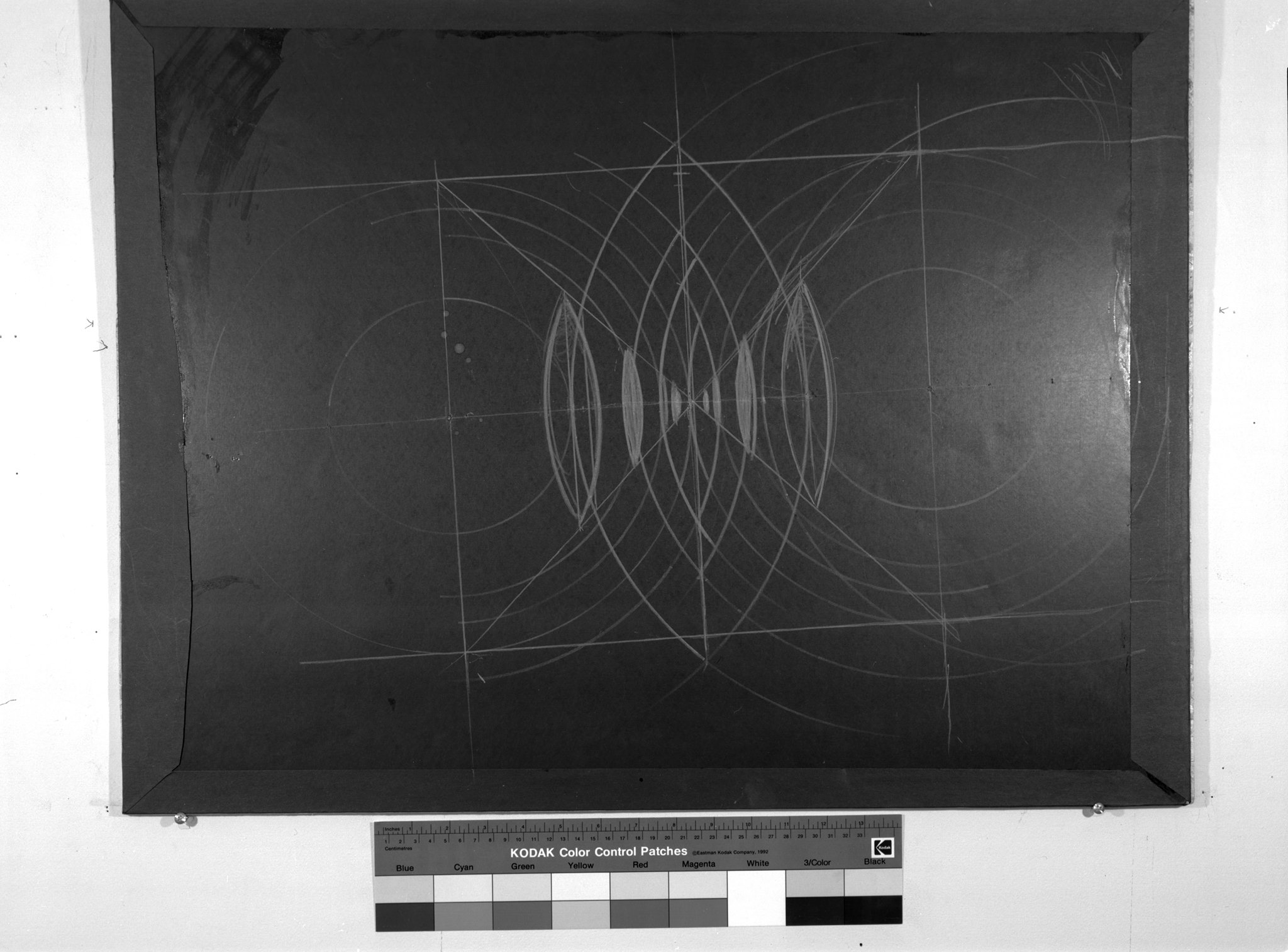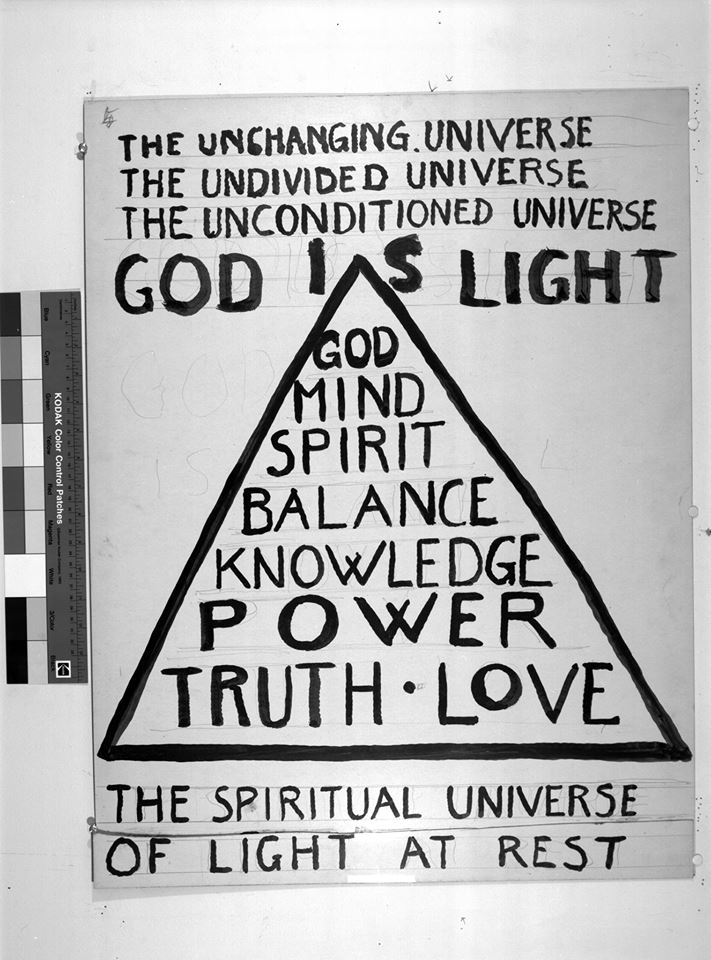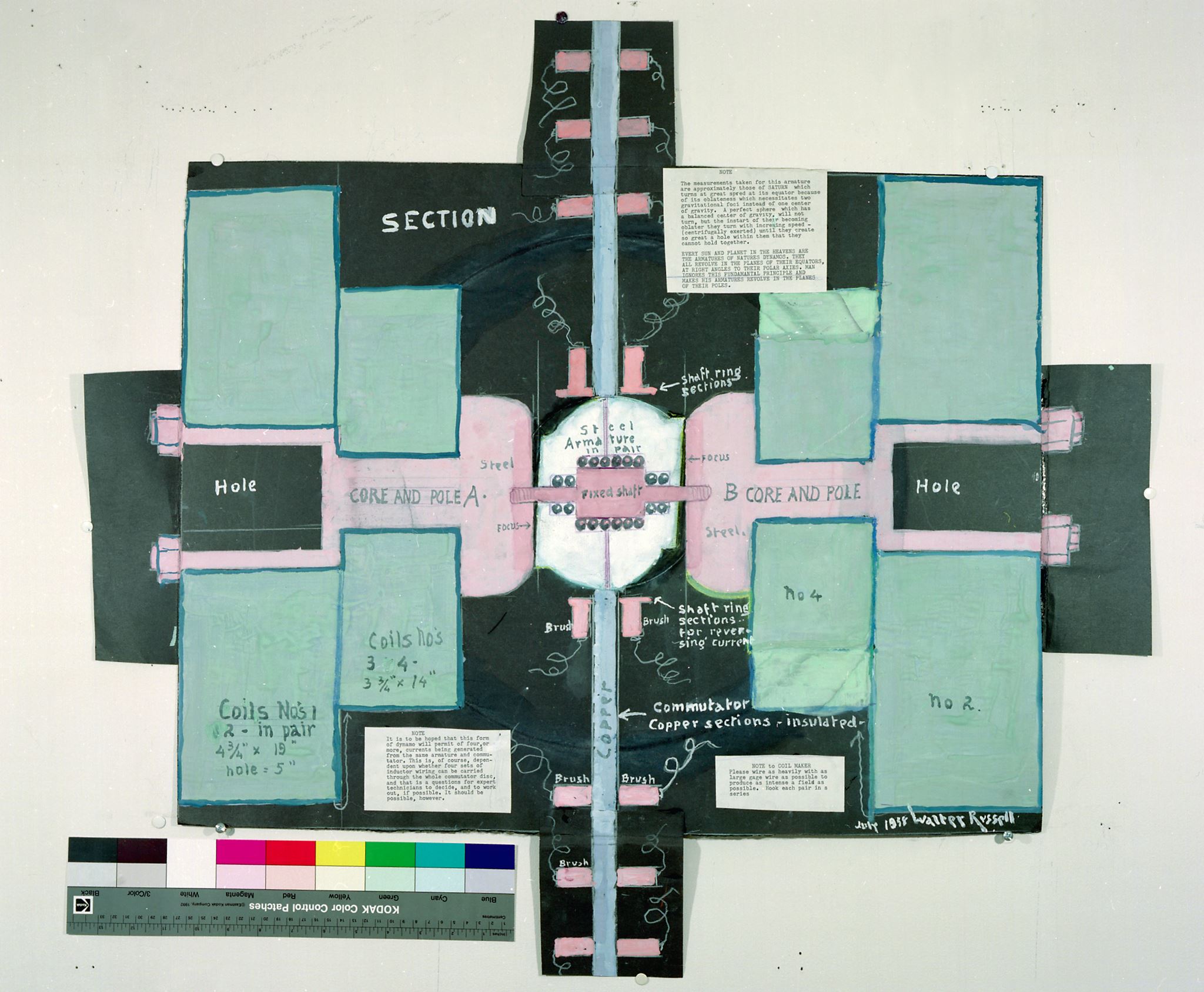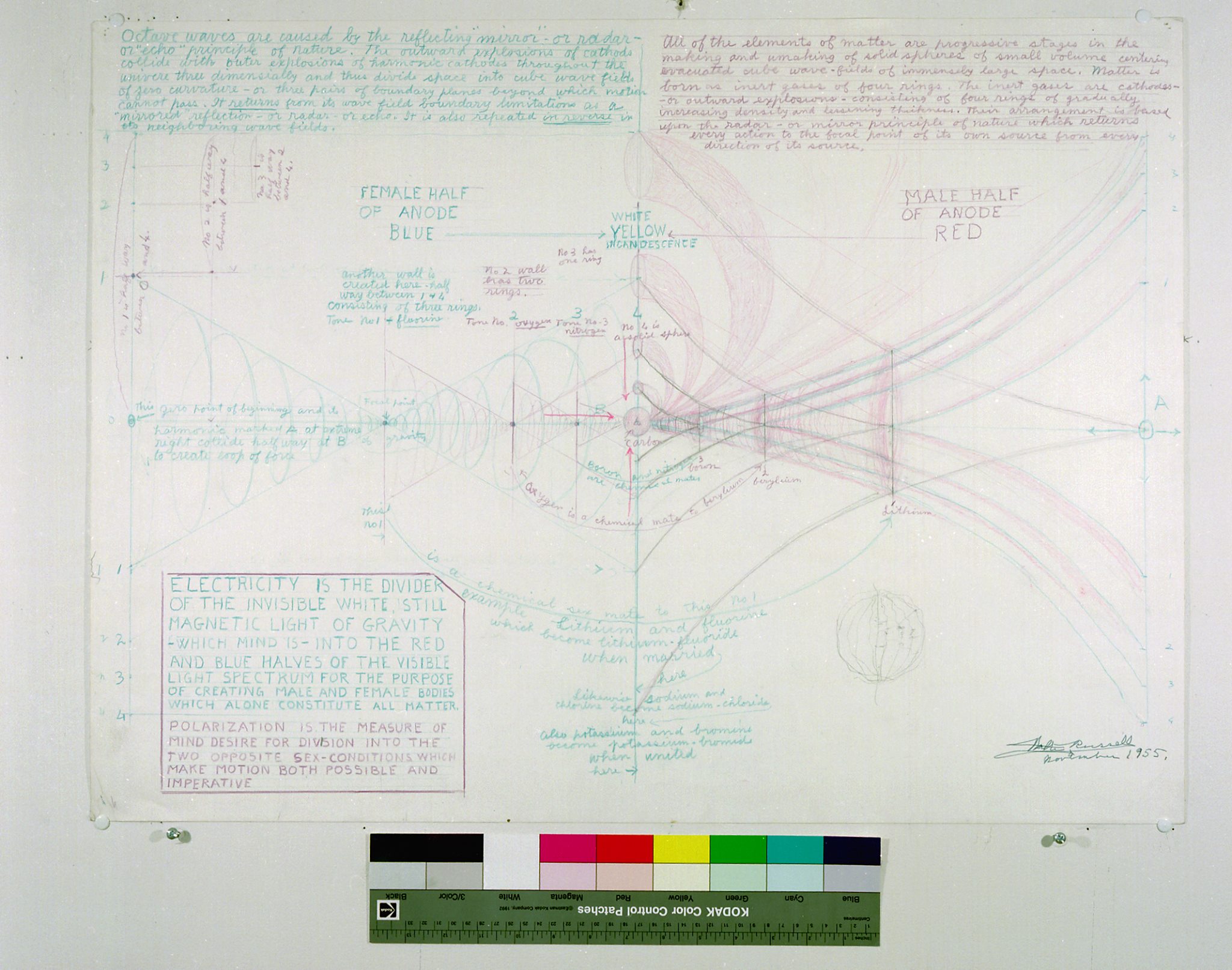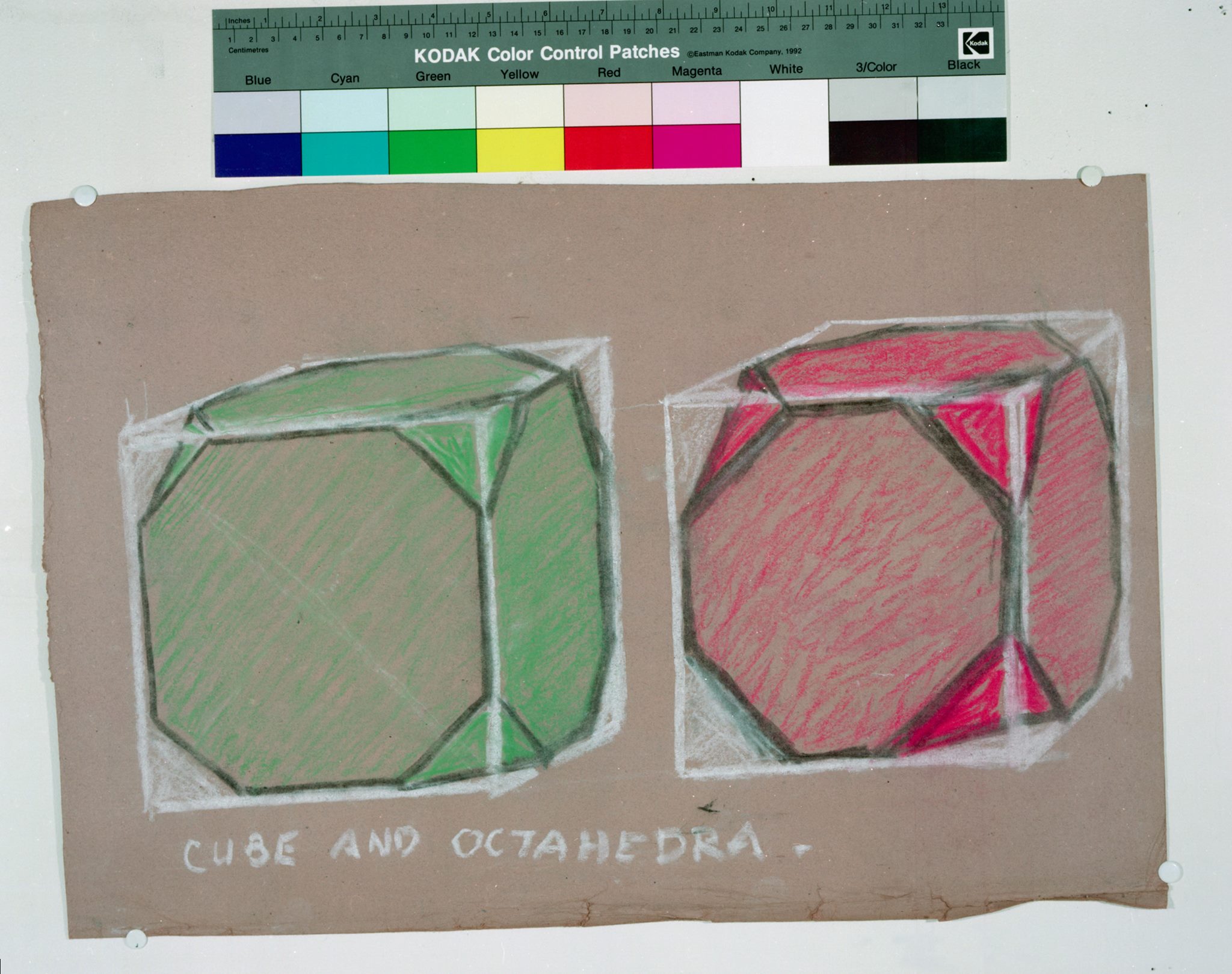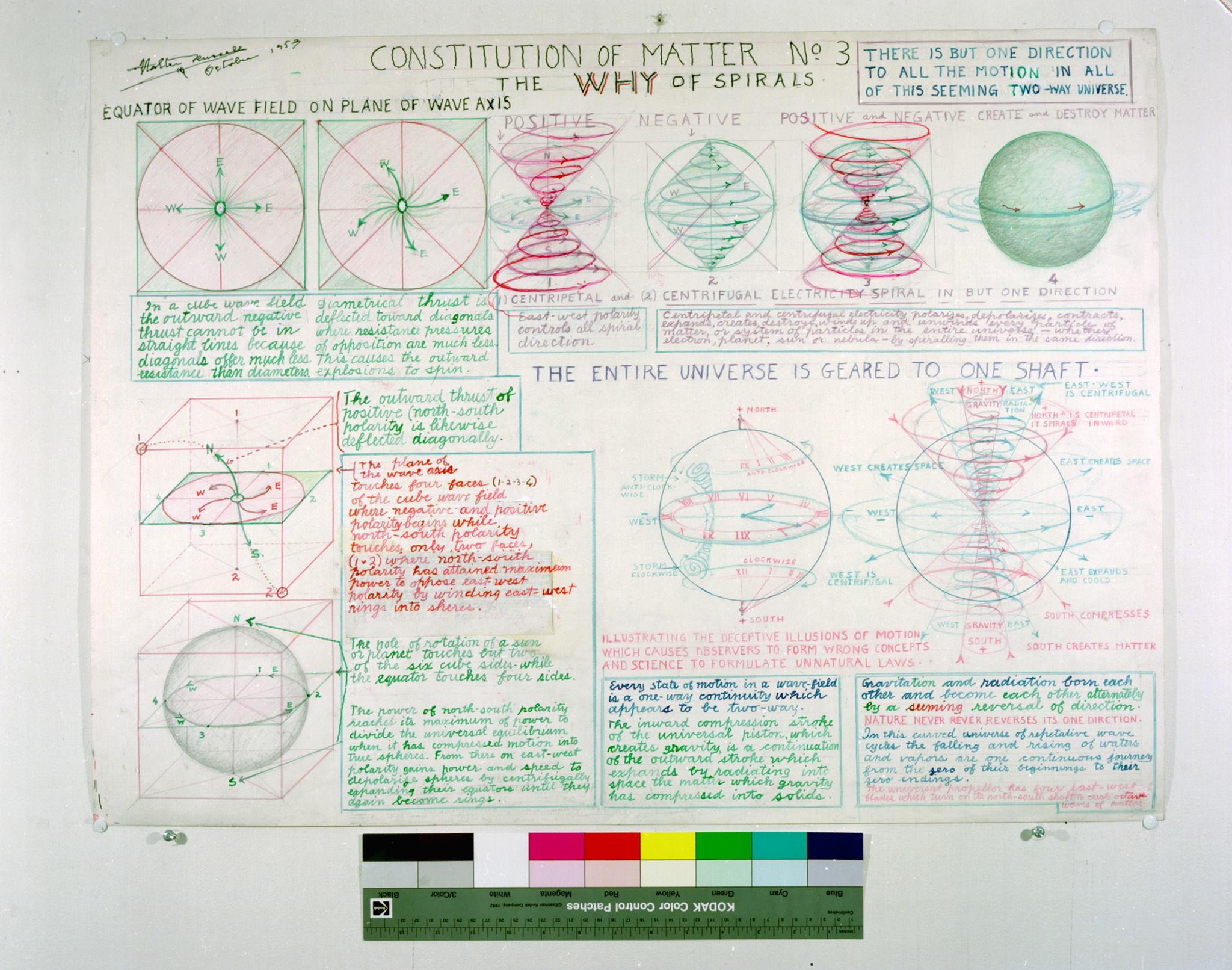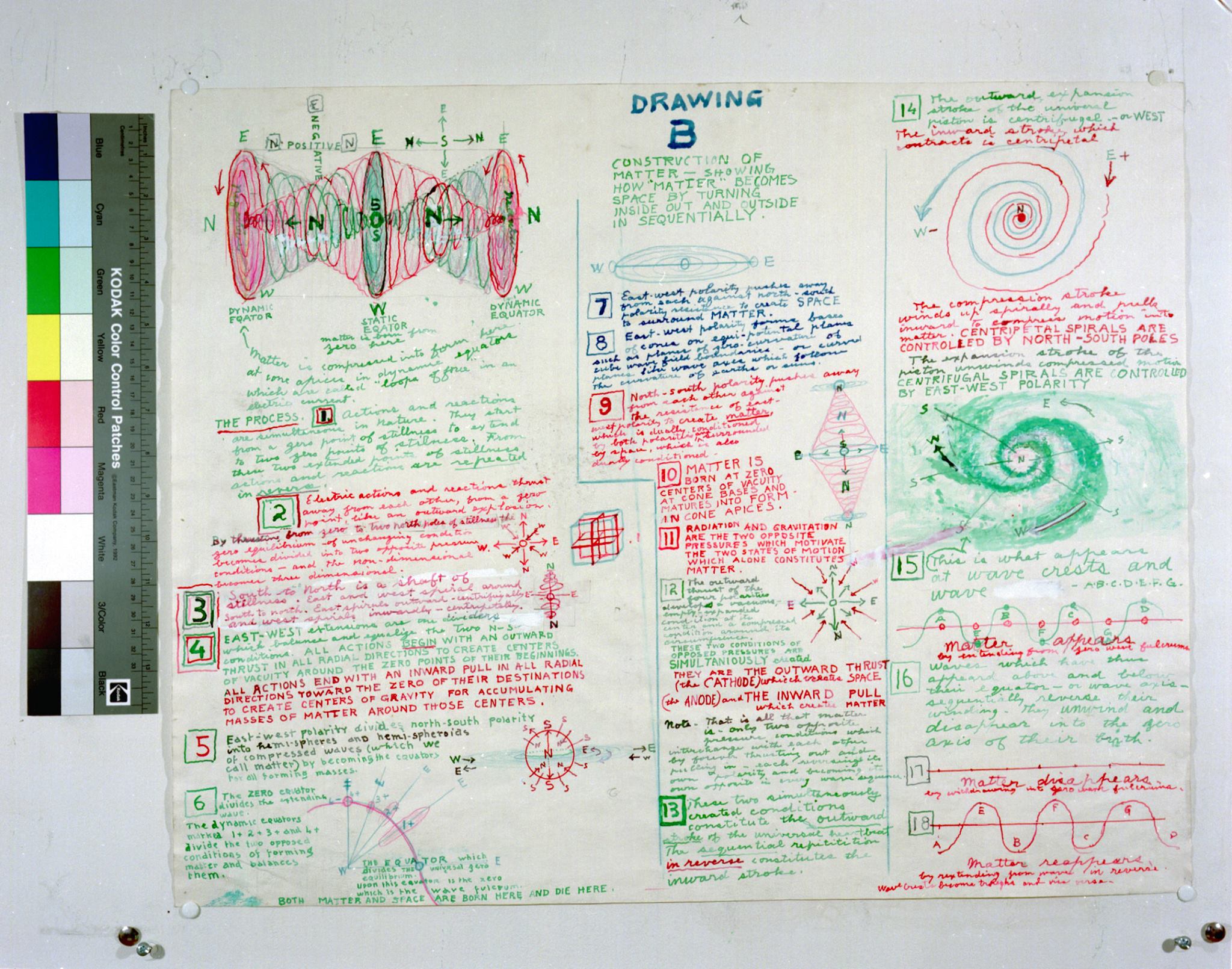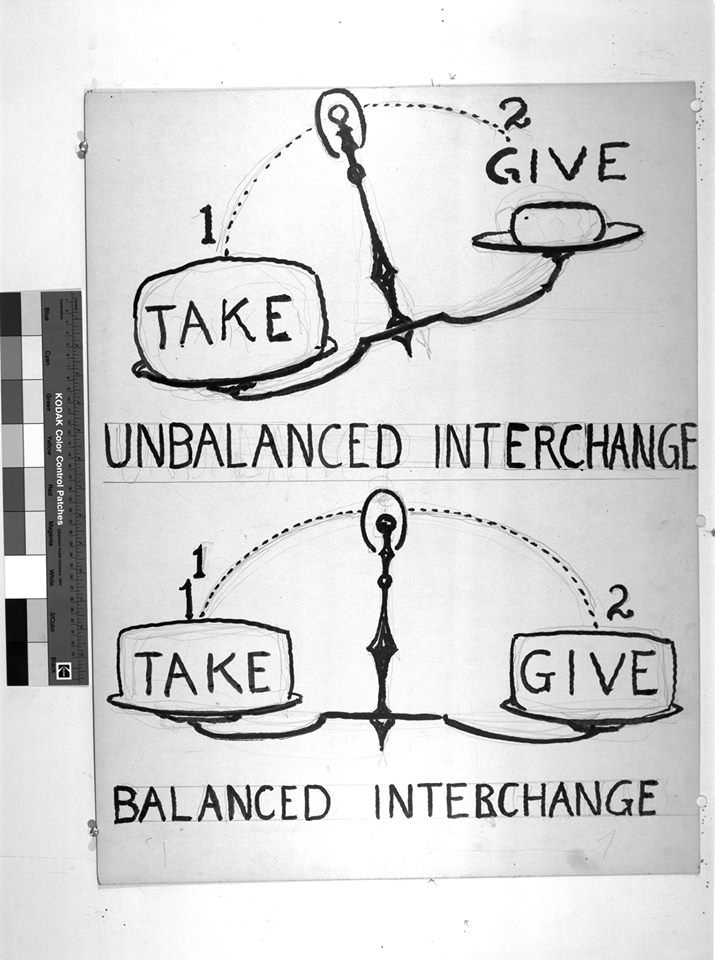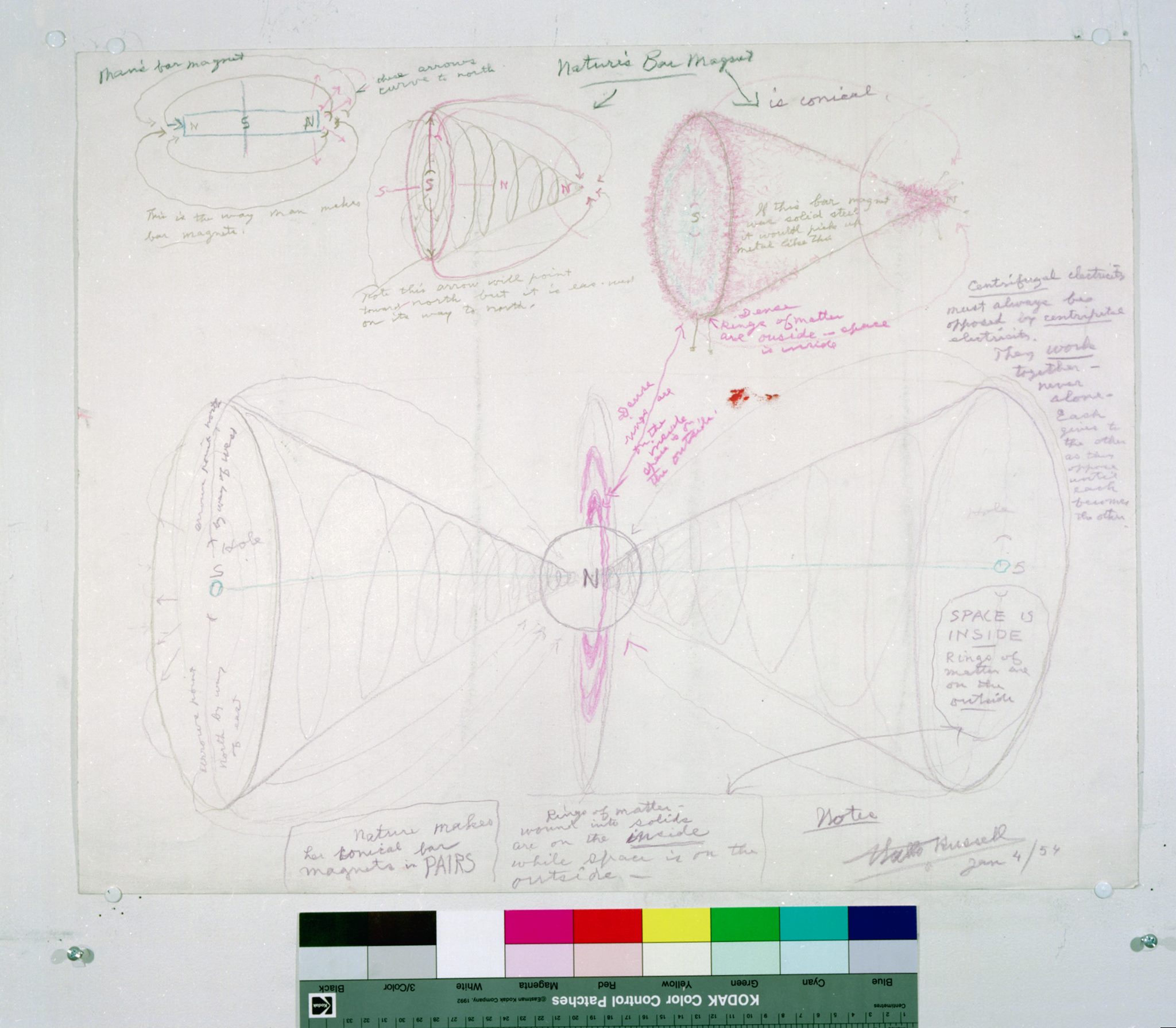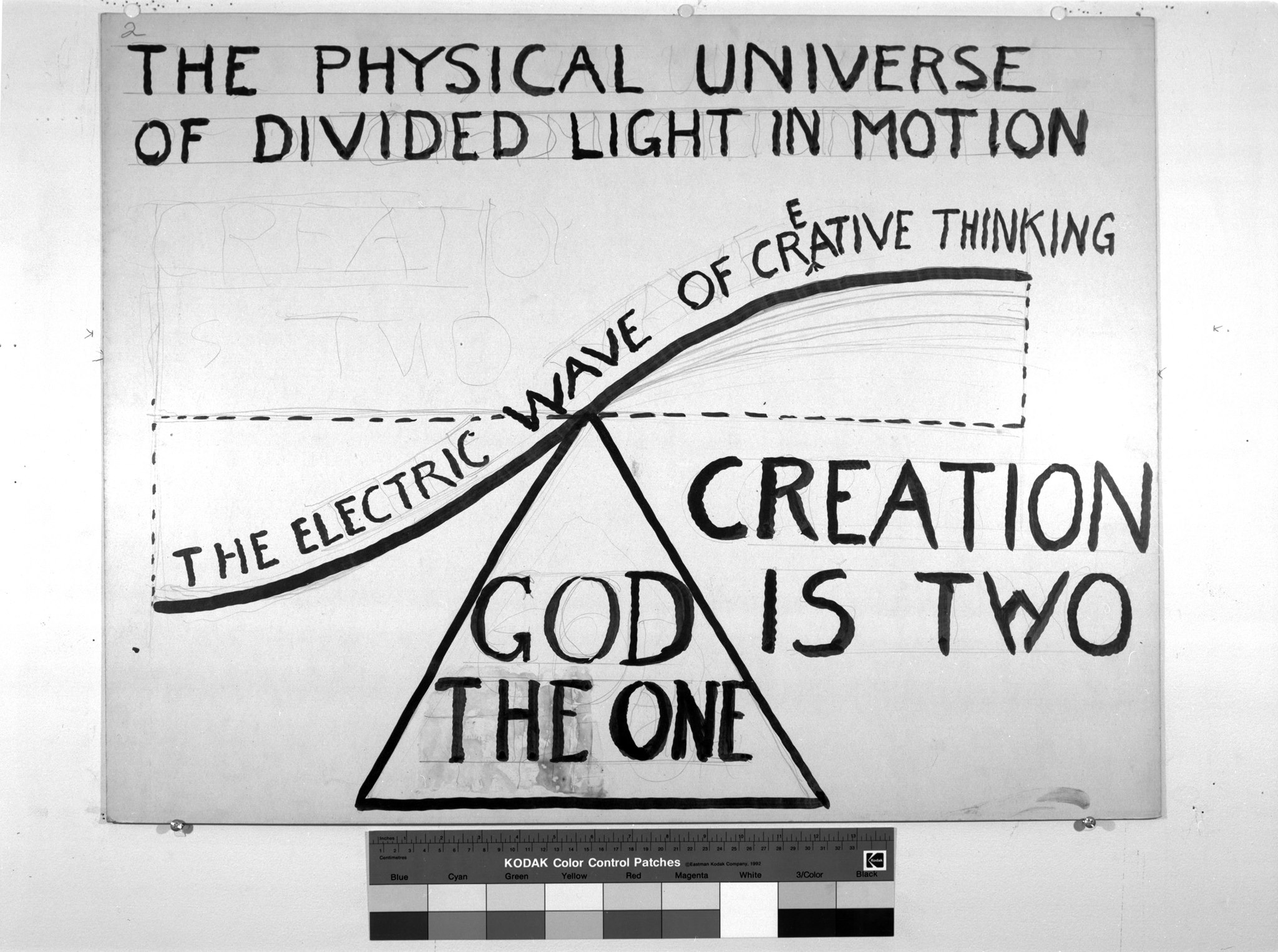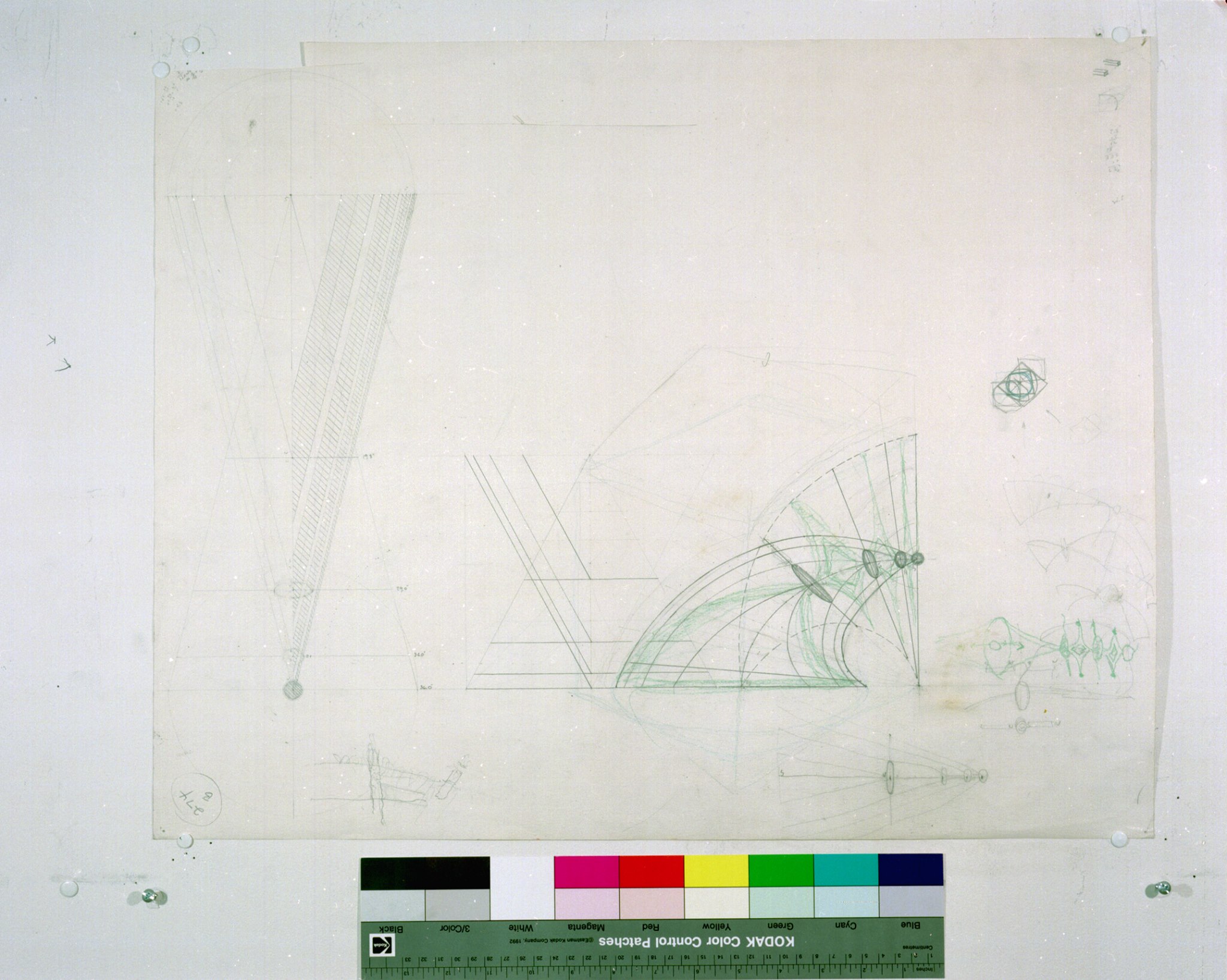Terrence Howard's AllShape Journal Notes
Walter Russell References
This is an ELECTRIC universe of motion, not a Newtonian gravitational universe. Nor is the universe an objective material universe. Objectivity is only one single moment in the life of the entire cycle. That cycle is comprised of many such moments some of which are sensed as density and materialistic while others are beyond sensing.
If this change in our thinking is true to Nature, there can be only one kind of electicity–positive electricity, meaning the power to charge or compress. It necessarily and logically follows that a negative electricity would be impossible in an electrically polarized universe in which both divided mates are equal. It also would be unnecessary if the other end of the compression pump, which this universe is, is the universal vacuum. Shall we call this new thinking, or is it but changed thinking?
Shall we concede that early observers who arrived at such conclusions in the infancy of scientific research, were right, without the possibility of being mistaken? Or can we not consider them as torch bearers, rather than anchors?
Darren Coulomb meetup June 21, 2018
Walter Russell - A New Concept Of The Universe 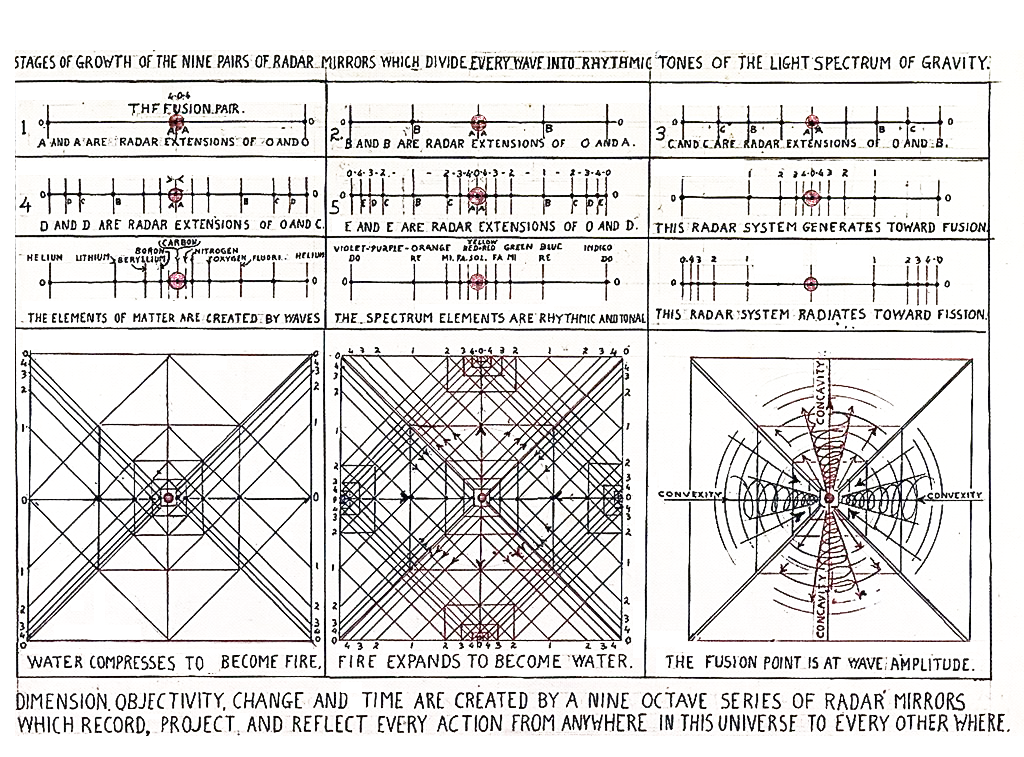
- The Sea Children, 1901
- The Bending of the Twig, 1903[40]
- The Age of Innocence, 1904[41]
- The Universal One, 1926
- The Russell Genero-Radiative Concept or The Cyclic Theory of Continuous Motion, L. Middleditch Co., 1930
- The Secret of Light, 1st ed., 1947, 3rd ed., Univ of Science & Philosophy, 1994, ISBN 1-879605-44-9
- The Message of the Divine Iliad, vol. 1, 1948, vol. 2, 1949
- The Book of Early Whisperings, 1949
- The Home Study Course, (with Lao Russell), 1st ed., 1950–52
- Scientific Answer to Human Relations, (with Lao Russell), Univ of Science & Philosophy, 1951
- A New Concept of the Universe, Univ of Science & Philosophy, 1953
- Atomic Suicide?, (with Lao Russell), Univ of Science & Philosophy, 1957
- The World Crisis: Its Explanation and Solution, (with Lao Russell), Univ of Science & Philosophy, 1958
- The One-World Purpose, (with Lao Russell), Univ of Science & Philosophy, 1960
Books published after his death:
- Think: The First Principle of Business Ethics, Univ of Science & Philosophy, 2nd ed., 2003, ISBN 1-879605-73-2
- Your Day and Night, (excerpt from The Message of the Divine Iliad), Univ of Science & Philosophy, 1993, ISBN 1-879605-09-0
- The Sculptor Searches for Mark Twain's Immortality, (talk given 1934), Univ of Science & Philosophy, 1991, ISBN 1-879605-31-7
- The Electric Nature of the Universe, (talk given 1936), Univ of Science & Philosophy, 1991, ISBN 1-879605-00-7
- Space and the Hydrogen Age, (talk given 1939), Univ of Science & Philosophy, 1989
- The Immortality of Man, (talk given 1944), Univ of Science & Philosophy, 1991, ISBN 1-879605-33-3
- The Fifth Kingdom Man, (talk given 1946), Univ of Science & Philosophy, 1991, ISBN 1-879605-01-5
- Genius Inherent In Everyone, (talk given 1946), Univ of Science & Philosophy, 1994, ISBN 1-879605-36-8
- The Secret of Working Knowingly with God, (talk given 1946), Univ of Science & Philosophy, 1993, ISBN 1-879605-38-4
- The Self Multiplication Principle, (talk given 1946), Univ of Science & Philosophy, 1993, ISBN 1-879605-39-2
- The Meaning and Acquisition of Wealth, (talk given 1946), Univ of Science & Philosophy, 1993, ISBN 1-879605-41-4
- The Dawn of a New Day in Human Relations, (talk given 1951), Univ of Science & Philosophy, 1991, ISBN 1-879605-32-5
- Caring for Your Physical & Spiritual Health, (talk given 1951), Univ of Science & Philosophy, 1994, ISBN 1-879605-40-6
- The Quest of the Grail, (unfinished manuscript), Univ of Science & Philosophy, 1991, ISBN 1-879605-02-3
- Where Do I Go When I Die, (with Lao Russell), (excerpts from other books), Univ of Science & Philosophy, 1992, ISBN 1-879605-37-6
- The Electrifying Power of Man-Woman Balance, (with Lao Russell), (is the same as The One-World Purpose except 2 projects at the end of the book are missing), Univ of Science & Philosophy, 1988
Russellian Monism
| Summary | Russellian monism consists of the following two claims: i) that science describes physical entities structurally but does not capture their intrinsic nature, and ii) that the intrinsic nature of physical entities is integral to the explanation of phenomenal consciousness. This view is 'monist' in that both the physical properties described by science and phenomenal properties are ultimately grounded in a single class of property - the intrinsic properties of physical entities. Russellian monist theories vary along a number of dimensions. They differ in their characterisation of the hidden intrinsic properties: panpsychist theories regard them as phenomenal properties while panprotopsychists regard them as non-phenomenal properties that can combine to form conscious states. Among panprotopsychists, some say that these properties are unexperienced phenomenal qualities while others say that their nature is beyond our current conceptual repertoire. Versions of Russellian monism differ in their characterisation of the relationship between these intrinsic properties and phenomenal consciousness: candidates include identity, constitution and combinatorial 'infusion'. Russellian monists also diverge in their characterisation of the relationship between these intrinsic properties and familiar physical properties: they might be regarded as the categorical grounds of physical dispositions, the relata of physical relations or the non-structural implementation of physical structures. These details determine whether or not a Russellian monist theory qualifies as physicalist. |
| Key works | Russellian Monism gets its name from a position most notably espoused in Russell 1927 though it should be remembered that modern versions of the view are quite different to Russell's own (and that there is some ambiguity about what Russell's own position really is). An excellent overview of Russellian Monism is offered by Alter & Nagasawa 2012. For a more detailed overview that goes deeper into the theory's historical roits see chapters 5 and 6 of Pereboom 2013. For panpsychist versions of Russellian Monism, see especially Strawson 2006 (and the various responses to this paper) and Seager 2006. For versions of Russellian Monism that deny panpsychism but which claim that phenomenal qualities are ubiquitous, see especially Feigl 1958, Maxwell 1979 and Unger 1998. For versions of Russellian monism that hold that we have no conception of the intrinsic nature of physical entities, see especially Stoliar 2001 (and his later revised position in Stoljar 2006) and Montero 2010. |
| Introductions | An excellent overview of Russellian Monism is offered by Alter & Nagasawa 2012. Besides explaining why Russellian Monism is a promising position, this paper takes a careful look at some of the more subtle questions that a Russellian Monist theory must ultimately be able answer. Another good place to start is Stoliar 2001. This isn't an introductory paper, but it is a classic case for Russellian Monism that is presented accessibly and convincingly. |


